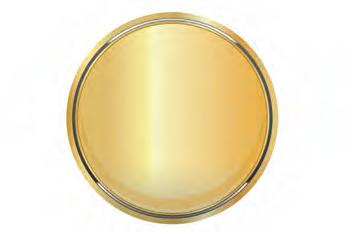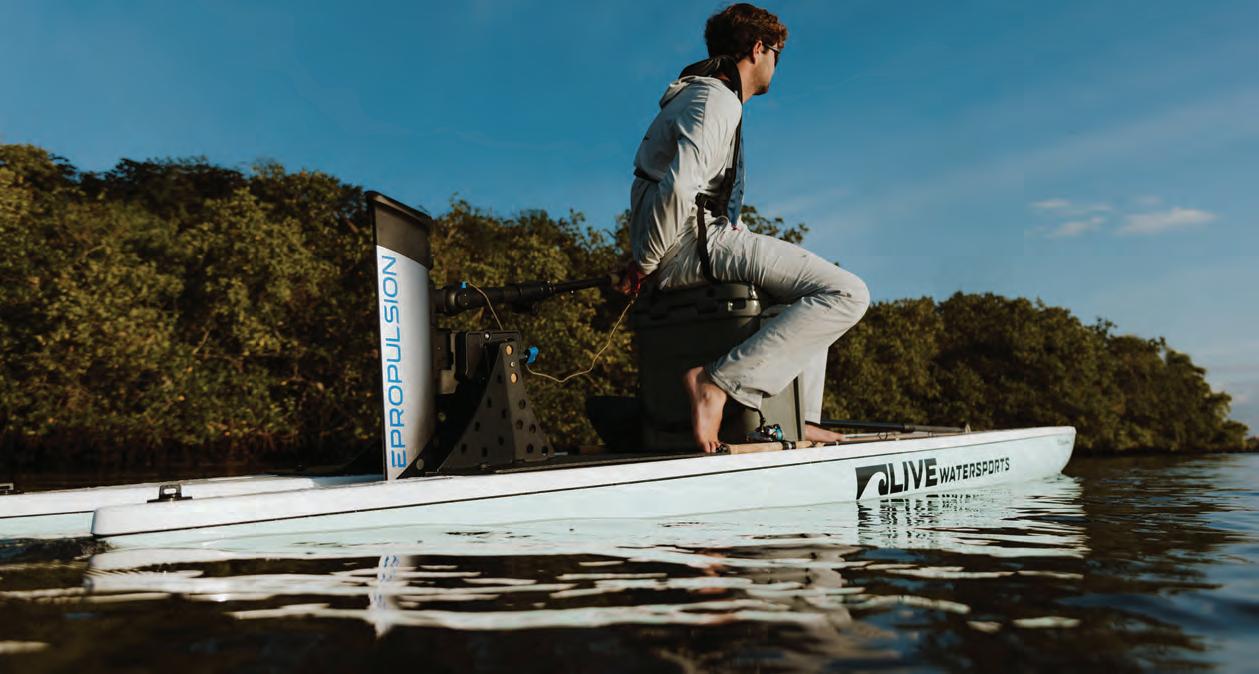
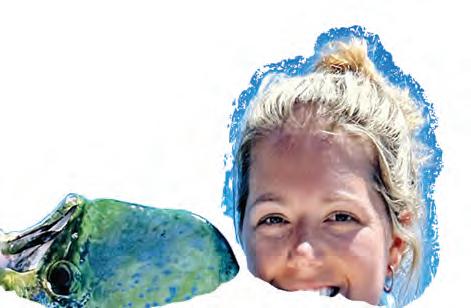







You’re looking at it! Furuno’s award-winning Radar gives you clarity & target separation like no one else. Don’t take our word for it. See for yourself. Scan here, and we’ll show you!





















You’re looking at it! Furuno’s award-winning Radar gives you clarity & target separation like no one else. Don’t take our word for it. See for yourself. Scan here, and we’ll show you!











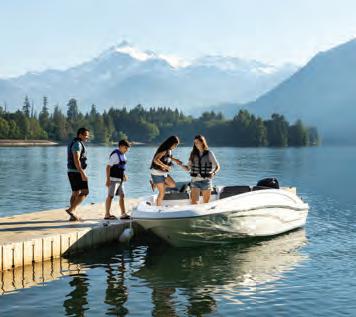






Embarking on the open water is an exhilarating experience, flled with the promise of adventure and relaxation. Whether you’re a seasoned sailor or a weekend cruiser, protecting your vessel with proper insurance is not just a choice—it’s a necessity. Explore the reasons why every boat owner should prioritize boat insurance for a worry-free voyage.
The open water can be unpredictable, with unexpected storms, collisions, or other potential accidents. Boat insurance can give you fnancial protection if there is damage to your vessel, providing coverage for repairs or replacement.
Accidents on the water can result in damage to other boats, docks, or even injuries to passengers. Boat insurance offers liability coverage, which can pay for damages or injuries you’re liable for while boating, up to specifed limits, and lawsuit costs if you’re sued. This includes damage you cause to another watercraft or if someone on or near your boat is injured and you’re found to be legally responsible.
Unfortunately, boat theft and vandalism are realities that boat owners face. Boat insurance has comprehensive and collision coverage that can protect you against events outside of your control, including theft and vandalism.
Accidents on the water may lead to injuries for you or your passengers. Boat insurance offers a range of optional medical payments coverage limits, helping to cover medical expenses if you are in an accident or someone is hurt on your boat, regardless of fault.
If you fnanced the purchase of your boat, most lenders require insurance coverage to protect their investment. Having boat insurance not only fulflls these requirements but also gives you peace of mind knowing that your fnancial interests are safeguarded.


Some water municipalities and marinas may require proof of insurance for docking or accessing certain areas. Boat insurance allows you the fexibility to explore different destinations without worrying about entry restrictions.
Emergency towing and assistance
Progressive boat insurance can include optional Sign & Glide® On-Water Towing coverage. If your boat is disabled or breaks down on the water, Sign & Glide® pays for on-water towing, jump starts, soft un-groundings, and fuel delivery.
Wreckage removal
If your boat sinks, Progressive boat insurance will cover the cost of removing your boat from the water (if removal is legally required).
Investing in boat insurance is not just about protecting a valuable asset; it’s about safeguarding the memories, experiences, and joy that come with your on-water adventures. Don’t let unforeseen circumstances disrupt your journey—navigate with confdence, knowing that Progressive boat insurance has you covered. Ensure a smooth and worry-free voyage, because when it comes to your boat, peace of mind is the ultimate luxury.
Scan to get a quote in as little as 4 minutes
learn more.




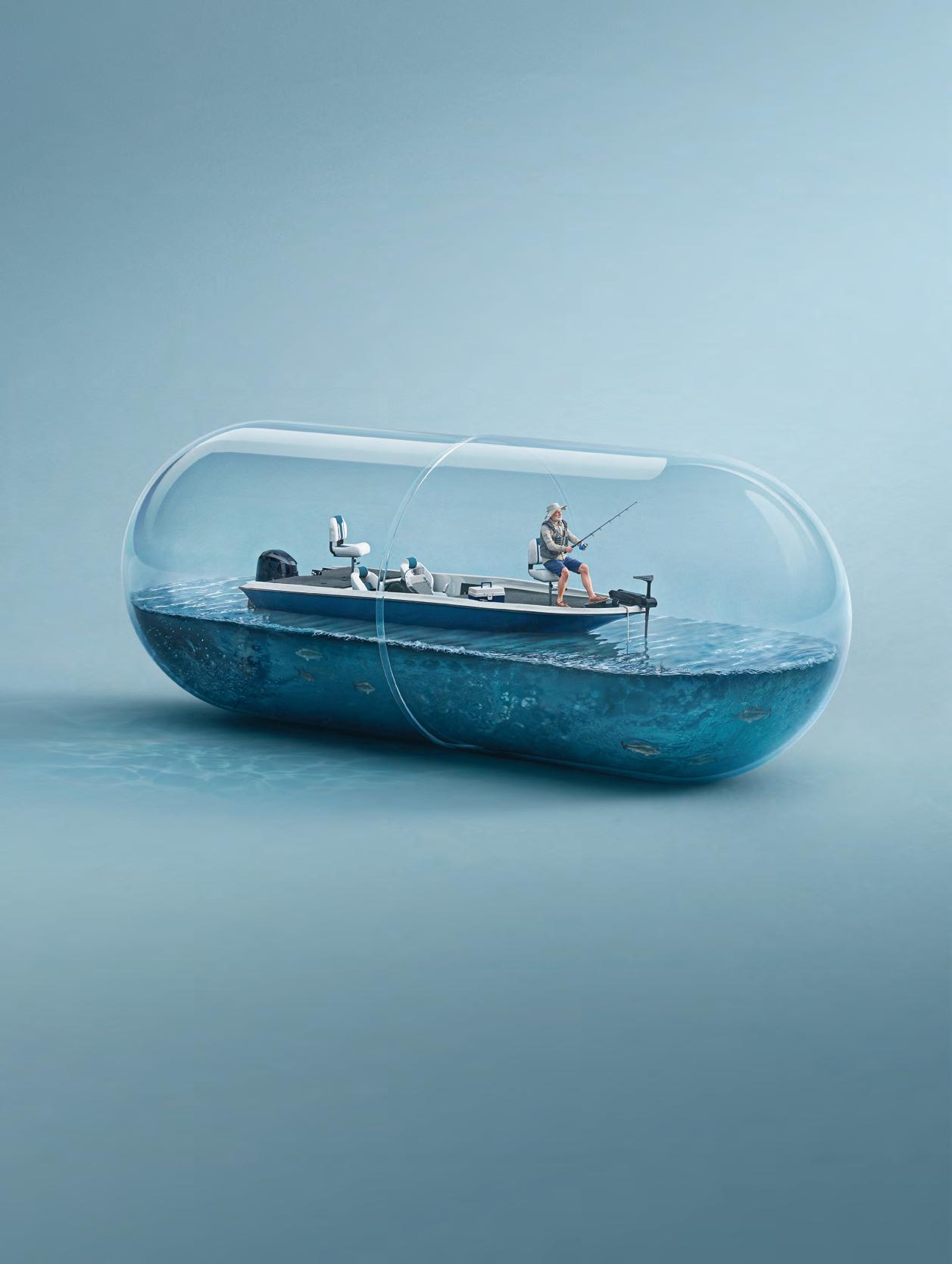
















Nestled in the scenic Blue Ridge Mountains of North Georgia against a backdrop of forests and river banks, the bustling Bavarian alpine village of Helen o!ers a wealth of shing opportunities for anglers of all skill levels.
By Unicoi Out tters
Trout shing is a highlight in the Helen area, with rainbow, brown, and brook trout abundant in local waters. Anglers can explore various shing experiences:
• High-Elevation Wild Trout: Tackle small creek wild trout in the serene mountain streams.
• Stocked Streams: Fish in streams replenished by the Georgia Wildlife Resources Division, o!ering both catch-and-keep and catch-andrelease options.
• Smithgall Woods State Park: Reserve a spot to pursue trophy trout in this pristine park.
• Private Water Access: Book guided or unguided trips on exclusive sections of the Chattahoochee and Soque Rivers.
#e optimal trout shing seasons are spring (March-May) and fall (October-November), with cooler water temperatures and comfortable
air conditions. Winter shing is also rewarding for those prepared for colder conditions.
For bass enthusiasts, the Helen area o!ers diverse shing experiences:
• River Fishing: Target native shoal bass, spotted bass, redbreast sun sh, and bluegill in the Chattahoochee and Chestatee rivers.
• Lake Fishing: Explore lakes like Burton, Seed, Rabun, Chatuge, and Lanier for largemouth bass, spotted bass, and sun sh species.
#e Helen, GA region is also home to three species of native redeye bass: Chattahoochee, Bartram’s, and Coosa bass. #ese colorful and spirited sh are best targeted from April to September. Anglers can pursue these species as part of the Georgia Bass Slam.
And, worth noting, Helen is an excellent destination for family shing adventures:
• Unicoi State Park: O!ers opportunities for
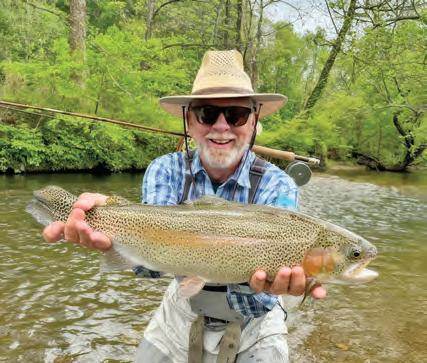
kids to trout sh in Smith Creek, bream sh in the lake, and enjoy activities like hiking to Anna Ruby Falls, zip-lining, kayaking, paddle-boating, and archery.
• Lake Burton Trout Hatchery: A short drive from Helen, this hatchery allows visitors to sh for stocked trout at Moccasin Creek State Park, explore wild trout streams upstream, bream sh at the lake shoreline, and hike to Hemlock Falls.
Whether you’re an experienced angler or a beginner, Helen, GA o!ers a diverse range of shing experiences and is a worthy destination to add to your bucket list.
Unicoi Out tters, established in 1994, is the Helen, Ga area’s premier y shop and guide service, providing expert guidance and quality gear to enhance your shing experience. Visit unicoiout tters.com to learn more about available trips, gear, and to book your next shing excursion. To learn more about Helen, GA, visit helenga.org.

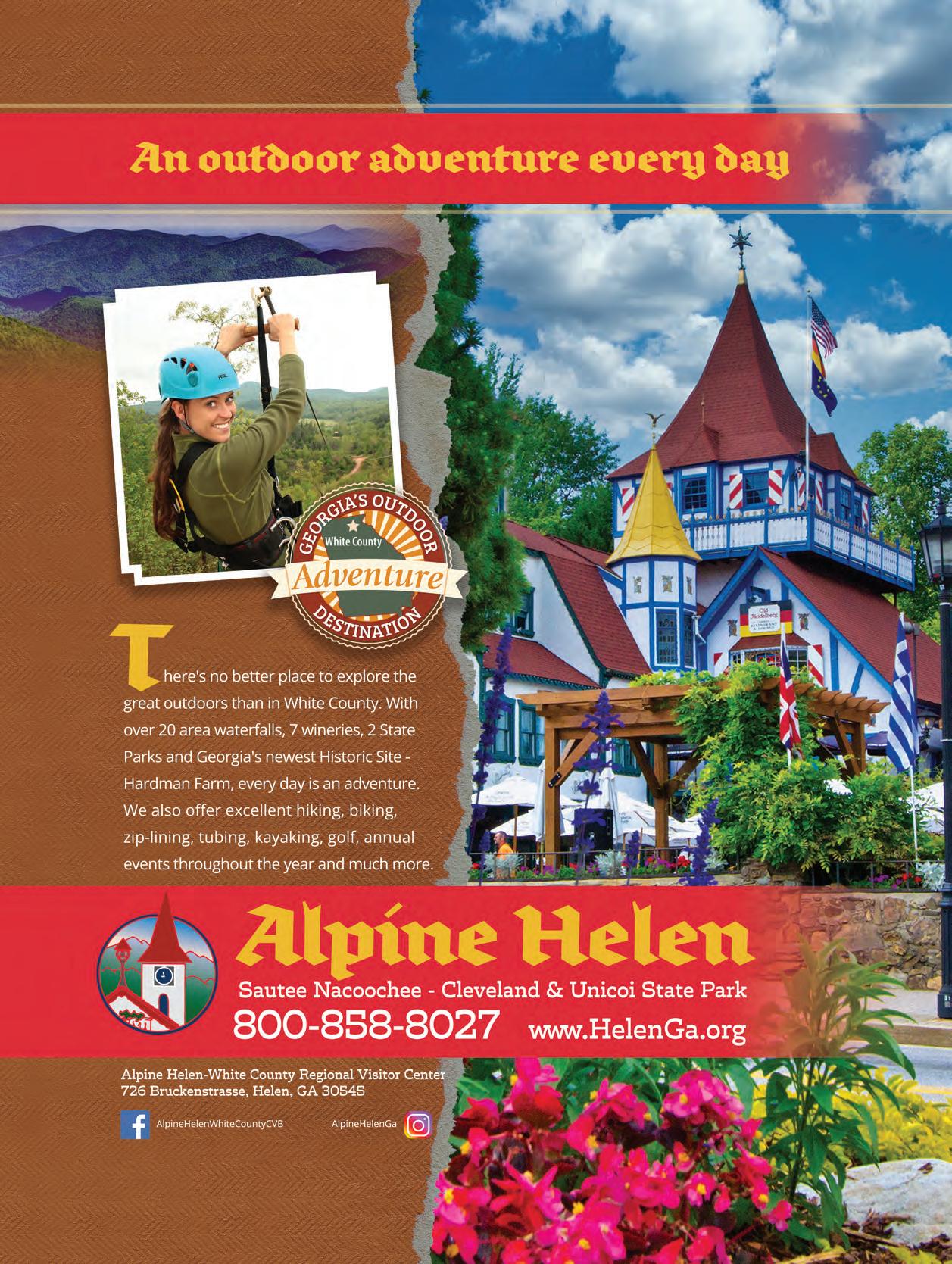




By Ben Martin, Editor in Chief

Chimney Rock Village, North Carolina was decimated by last year’s rare hurricane surge in the Rocky Broad River. Decimated. All ve of the village’s bridges, 30 percent of the small businesses, most of Main Street to Bat Cave, the village’s two campgrounds, over 35 RVs, and over 30 homes were washed away. With only one road in or out of Chimney Rock, no power, no public services and winter coming on, this little mountain village of 125 residents banded together to help each other. #ey immediately rolled up their sleeves and began the process of survival and renewal.
Always one of this writer’s favorite trout streams, Chimney Rock Village and it’s meandering Rocky Broad River was an annual sojourn for me and many anglers throughout the country.
I recently visited Chimney Rock and had the opportunity (privilege) to speak with the town’s mayor, Peter O’Leary, about the village’s reconstruction e!ort and how truly self-reliant these mountain folk are. According to Mr. O’Leary, volunteer groups like Spokes of Hope and the 101st Airborne showed up with much needed supplies and the Chimney Rock community, along with the volunteers, began the process of moving forward; volunteers like Shane Zoccole, Barbara Meliski, Joe from Wyoming, the whole Spokes of Hope crew immediately started pitching in.
#e river has taken a somewhat di!erent route through Chimney Rock. Some say its course now resembles its course from the mid 1800s when residents rst began settling the Hickory Nut Gorge. Today, crews are hard at work everywhere you look, roads are in and the future looks bright for a return to a new form of reality for both the residents as well as visitors. And while the course of the river has morphed, the sh haven’t gone anywhere, and while the riverfront buildings will invariably change, the beauty of the

mountains and the serenity and superior trout shing of the Rocky Broad River, along with the spirit of the residents will likely never be diminished. For that we wholeheartedly embrace the moniker of “Mountain Strong” for everyone involved in this heartfelt e!ort to reclaim and restore this beautiful mountain village.
Whether you’re chasing trophy fish or charting your next offshore course, your time on the water deserves the best in navigation and marine technology. Defender brings you UNBEATABLE PRICES and EXPERT SUPPORT on Lowrance and Simrad electronics—trusted by professionals and weekend warriors alike.


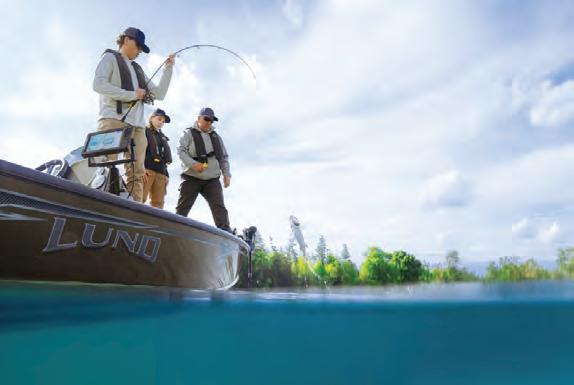




during the initial feeding frenzy.
If you have outriggers, trolling 4 lines is pretty straightforward. If your riggers have dual clips, the highest set clip will hold your longer lines. If you only have single clips, use them for longer lines with rigged ballyhoo, and run two chuggers from the gunnels, set closer to the boat.
If you dont have outriggers, you can use shorter rods or bent-butts for short lines near the back of the boat, and run two longer lines from taller trolling rods, set behind them midship, or just keep it simple and run two or three lines. #e most important rule of setting a spread is that lures that dive deeper should be set as shorter lines, running closest to the boat, while lures that skip the surface will be your longest set lines. #is gives you the ability to turn the boat without risking tangles. If your short chuggers are exactly the same, they can be run at identical lengths, otherwise, stagger them appropriately according to their weight and depth they run through the water.

By Capt. Quinlyn Haddon
or new boat owners with a vessel and captain capable of getting o!shore, targeting mahi is a great choice for rst-timers who are wanting to push into the o!shore shery.
Mahi shing doesn’t require any predetermined coordinates, and anyone can head out there and nd them. Depending on your location and time of year, you can start looking for signs of life as shallow as 100’. #is time of year in the Florida Keys, you may have your best luck past 500’.
As you make your way o!shore, your hunt begins immediately. Your head should be on a swivel, scouring near and far for the telltale signs of mahi activity. Current edges, weedlines, debris, baitsprays, and diving birds found within the
desired depths, are all worth checking out.
When you have found one of these potential mahi zones, you will initially troll the area, and then move into casting at the school once you have hooked up to a sh.
Depending on your boat’s set-up, you can get the job done trolling 2-5 lines. It really isn’t necessary to go overboard with a mahi spread as they have a tendency to tangle lines, and a majority of your catching will be done a$er you have hooked up to a single sh. Once you have hooked up on the troll, you will have to clear all the other lines to prepare for casting at the school. If you have too many lines to clear, you may miss your opportunity for multiple hookups
If you want to run a $h line down the center, you can choose a long line that increases your chances of catching tuna. #is rod should be placed up high on the center of the boat in the rocket launcher and should have a very light lure that skips the surface. Alternatively, you can run it short from the transom, with a lure that dives deeper and increase your chances of catching wahoo.
If you opt for the short $h line, be aware that running anything with treble hooks is not recommended for targeting mahi. Not only do ip like rabid snakes when in the boat, but as they jump and shake when hooked, they can send that lure %ying back at you if they are successful in freeing themselves. Choose a wahoo lure with single hooks if you are running this type of spread.
If you go with a long line as your $h line, be mindful that you will likely catch more weeds this way. #is is a better option in open water while trolling under birds rather than weedlines. It also makes cult to make tighter maneuvers. Always make wide turns, and speed up through them to keep the lines tight and maintaining the lure’s action.
Once you’ve hooked into a mahi, slow the boat but keep it in gear while you clear the other trolling lines. Bring the hooked sh close to the boat, but leave it swimming in the water as it will act like a chumbag to bring his buddies up to casting range. Grab your spinning rods with 50-80# leader and an 8/0 j hook, toss on a live or chunk of bait and cast out behind the hooked sh. Let back, occasionally stopping the line with your nger and giving it a little twitch and then continuing to free-line it back. When you get a bite, give the sh a few seconds to eat awnd then close your bail and reel. Once you have all your rods hooked up with sh, start taking them into the boat one at a time and casting back into the school, holding multiple hooked sh in the water as you start rotating them out.
If you aren’t quite ready to go solo yet, give Sweet E’nuf Charters a call to book a mahi catching trip and we’ll teach you everything you need to know to make the mahi fear you.
Happy hunting!
Capt. Quinlyn Haddon guides with Sweet E’Nuf Charters out of Marathon, e Florida Keys. (504) 920-6342. www.captainquinlyn.com; IG: @captainquinlyn
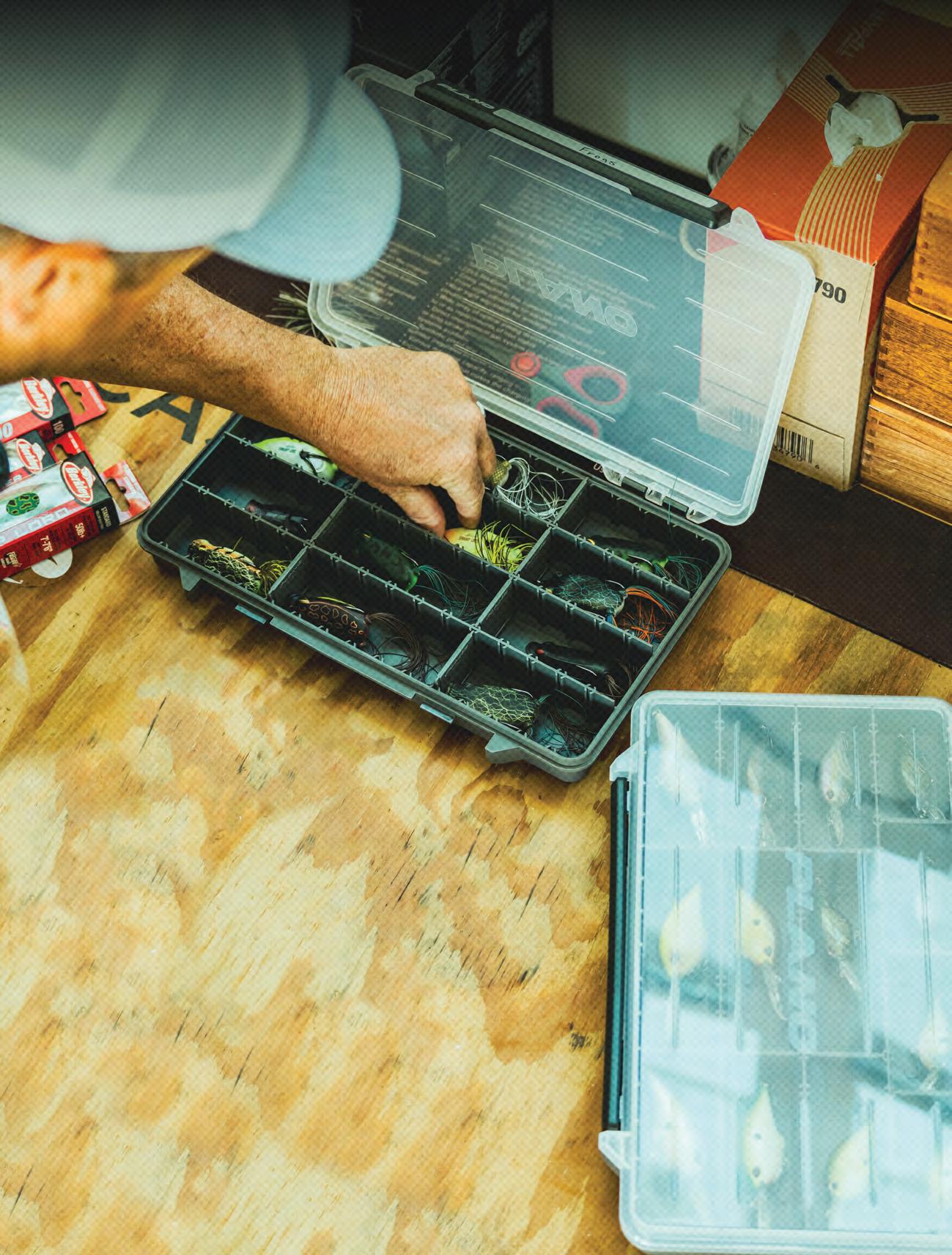
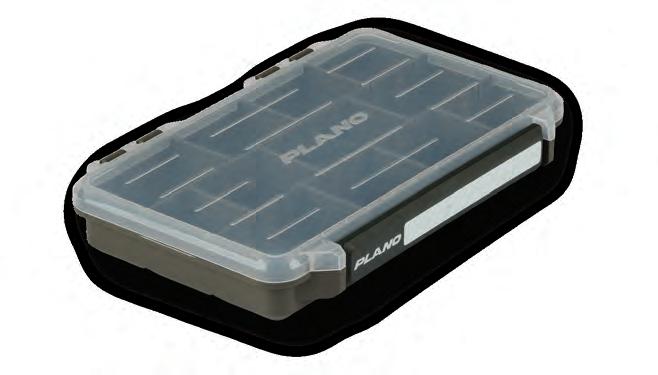
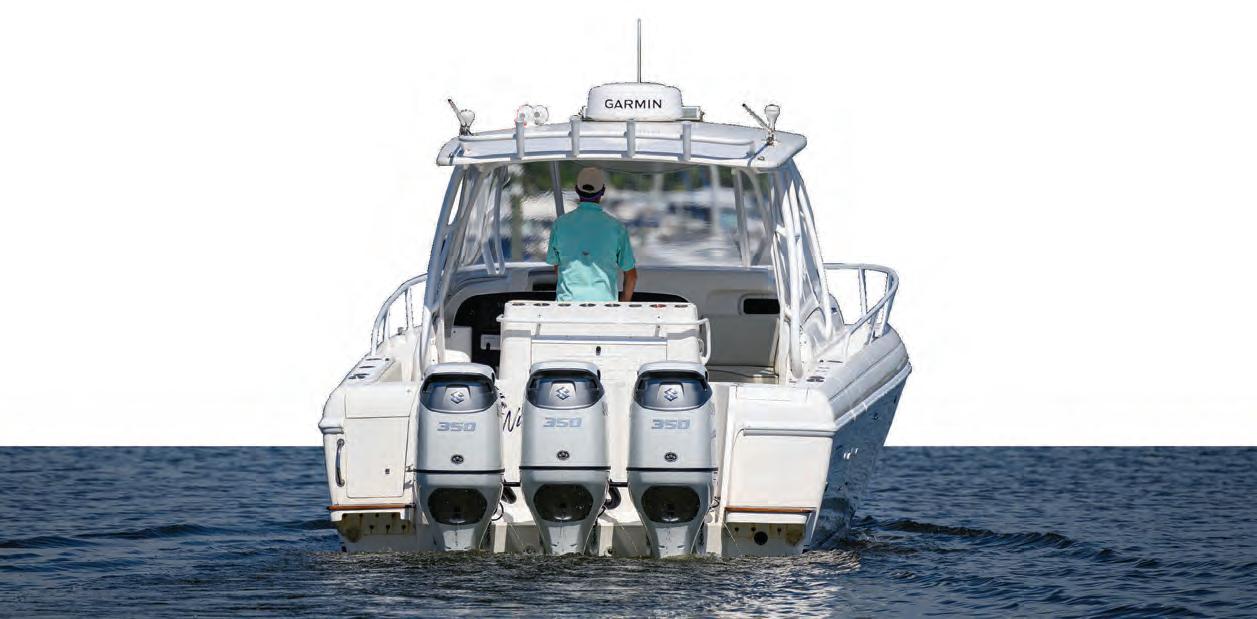









It’s no fsh tale when you run with a John Deere. You can get everything done faster and easier, so you get more time on the water. Plus, our special offers make them the catch of the day.




The National Oceanic and Atmospheric Administration (NOAA) Fisheries has announced a short recreational season of just two days for 2025 for red snapper in the South Atlantic. Red snapper harvest will be open for recreational anglers in the South Atlantic, from North Carolina through Florida, July 11 and 12. !e limit is one sh per angler.
Dates are subject to change in case a small cra weather advisory is projected. Any change in the date of the recreational season will be announced in the Federal Register, Fishery Bulletin, and an announcement via NOAA Weather Radio.
NOAA Fisheries also withdrew the proposed bottom shing closure from Amendment 59 to the Fishery Management Plan for the SnapperGrouper Fishery of the South Atlantic.
Amendment 59, introduced in January of this year, proposed a 3-month bottom shing closure for 55 species of reef sh in Northeast and Central Florida each year. Comprising federal waters from the Florida/Georgia border to Southern Brevard County, the closure would have had devastating

impacts on the sport shing industry and coastal communities that rely on angling tourism dollars.
!e American Sport shing Association (ASA) applauds the elimination of the proposed closure. “We are encouraged to see NOAA reconsider and withdraw the $awed bottom shing closure,” said Martha Guyas, Southeast Fisheries Policy Director for ASA. “With more than 5 million anglers taking to the water each year in our state, recreational shing contributes $11.1 billion to the Florida economy and supports more than 70,000 jobs. !is haphazard proposal would have gutted the industry without any sound scienti c justi cation.”

Moving forward, continued e orts to improve data collection and management are necessary to assist in providing more reasonable access. !e South Atlantic Great Red Snapper Count is underway and is expected to be completed later this summer.
ASA led a joint letter earlier this year in which 76 members of the recreational shing industry from dozens of states expressed their opposition to the area closures included in the Amendment. NOAA Fisheries also held multiple in-person hearings and received extensive comments during the public comment period, most of which opposed all or part of the proposal.
Unfortunately, Amendment 59 still maintains an unacceptably short recreational season of just two days for 2025. Although there was widespread grumbling and gnashing of teeth by recreational anglers, it did not come as a surprise to pretty much anyone.


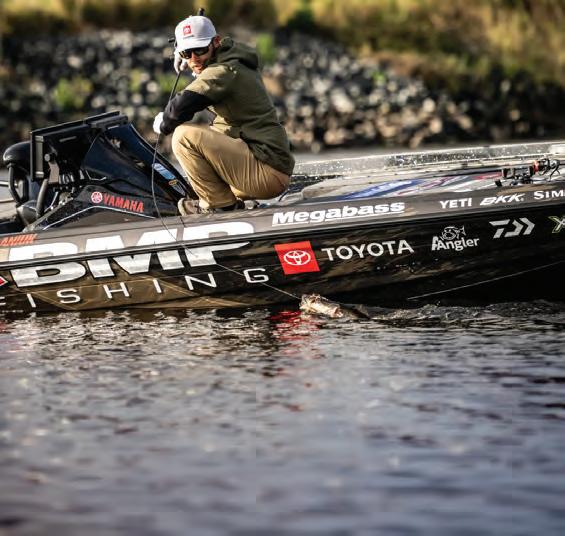
By Don Norton
If you’ve never been to Lake Okeechobee, it’s like shing in an ocean. With a surface area of 730 square miles, 135 miles of shoreline, and a length of 35 miles, it can be a bit humbling even to the top professionals who sh tournaments there. Hot spots abound. At one time or another, throughout the calendar year, virtually everywhere on the lake is a good shing area.
!e lake’s water levels uctuate 3-5 feet per year. !e normal water level in the winter ranges from 14 to 16 feet above sea level, and the normal water level in the summer months ranges from 12 to 15 feet.
As I write this article in mid-May, the water level is 11.17 feet above sea
level, unusually low for this time of year, creating many navigational hazards. It is expected to go even lower before the rainy season hits South Florida. What’s a sherman to do? !e lake becomes dangerous at this depth, and many of the best spots can be hard to get to.
Like many other anglers, I found the answer years ago.
!e Kissimmee River originally owed over 100 miles from Lake Kissimmee to Lake Okeechobee. !e waterway, part of the Everglades headwaters, was straightened and channelized into a 56-mile-long canal called the C-38 Canal in the 1960s for ood control. Restoration e$orts are underway to restore the river to its original meandering state and revitalize the ecosystem. !e depth of the river as it enters Lake Okeechobee ranges between 25 and 30 feet deep, o$ering an excellent opportunity for anglers to catch bass, crappies and bluegills. Other parts of the river can be as deep as 45 feet.
But it o$ers some excellent bass shing. Just ask Greg DiPalma, Brandon Palaniuk, Will Davis Jr., or Timothy Dube, four professionals who shed the 2025 BassMaster Elite Tournament on Lake Okeechobee earlier this year.
On Day One, shing in a small stretch of the C-41A Canal that ows southeast from Lake Istokpoga, DiPalma weighed in 29.12, Davis Jr., 26.2, Palaniuk 23.7, and Dube had 23.7. !e foursome was in rst, second, third, and 10th, respectively.
On Day Two, Palaniuk put two 8-pounders in the boat on consecutive casts, weighing in 34.10 for the day. He went on to win the tournament with a staggering 95.4 pounds, all caught in the Kissimmee River.
!is wasn’t the rst time an Elite series tournament on Lake Okeechobee was won on the Kissimmee River. Tyler Rivet won the event in 2023 a er nding an underutilized area of hard bottom spots, similar to the area Palaniuk and the others shed.
As Buck Perry used to say, “!e Home of the bass is deep water.” More and more anglers are proving that to be true.
Most of the locals will tell you, don’t overlook the river. As good as Lake Okeechobee is, the key in low water conditions, as well as other times of the year, is the Kissimmee River.
Don Norton is Co-Publisher of Coastal Angler Magazine’s Okeechobee edition. Contact him at (863) 273-4998 or don@theanglermagazine.com.
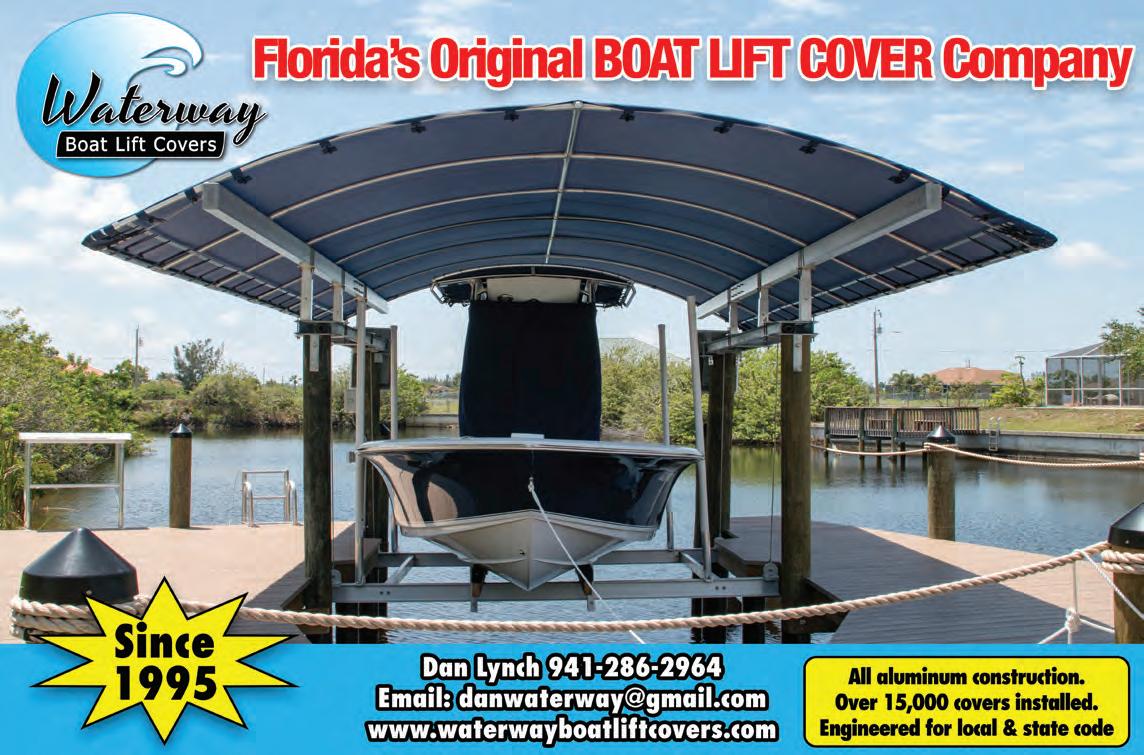


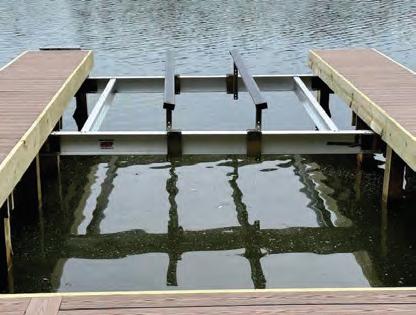
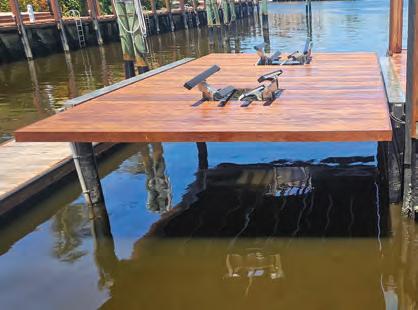
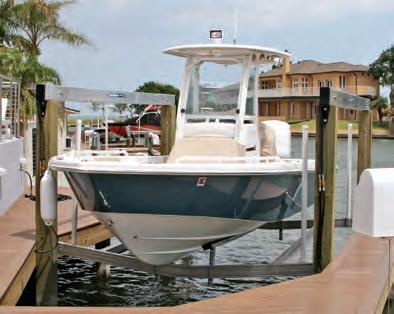


ShoreStation hydraulic boat lifts are a reliable choice for coastal residents and boating enthusiasts alike. Their strong construction, made with corrosion-resistant materials, allows them to withstand harsh environmental conditions, including sun, storms, and saltwater damage. ShoreStation provides a steadfast solution for protecting waterfront investments, o ering peace of mind to owners in the Sunshine State.

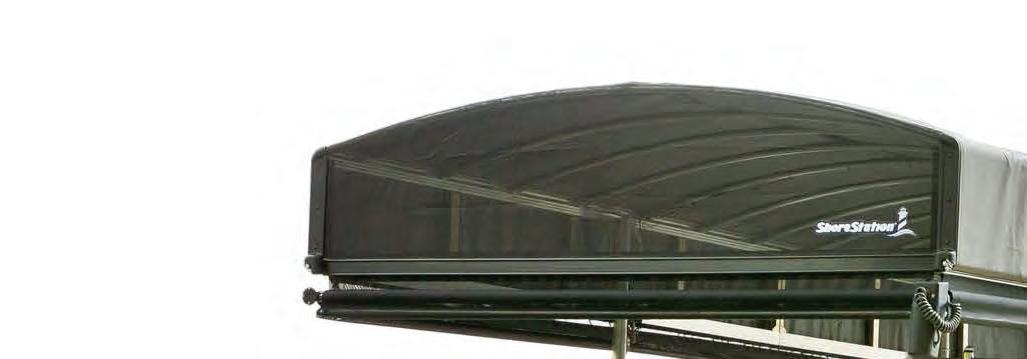
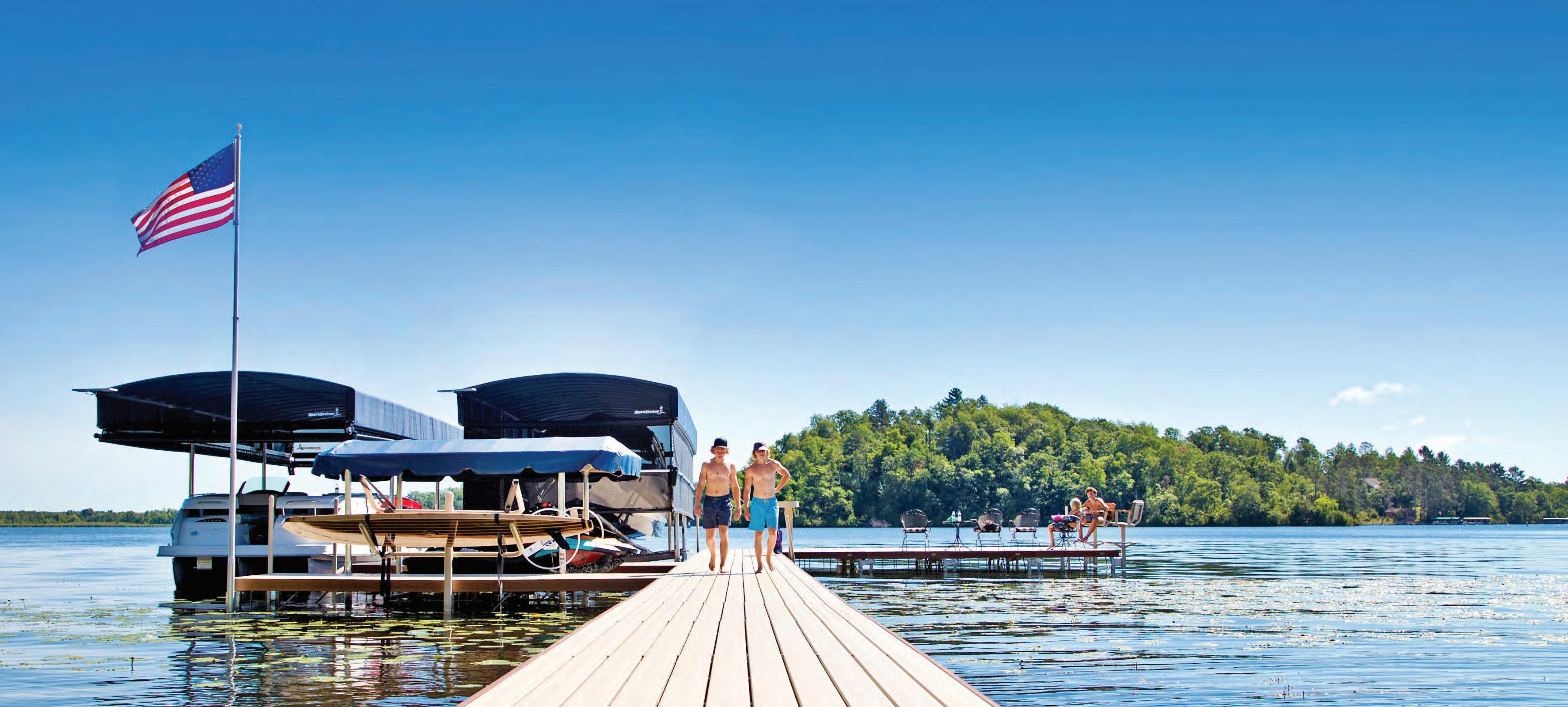



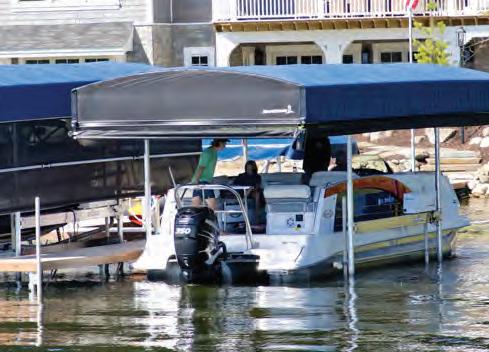

Equipped with exceptional weather resistant fabric and breathable SunTex 80 woven mesh ends for maximum protection and durability,

Made from the highest quality materials, our innovative hydraulic boat lift is one of the fastest and safest lifts on the market today. When you have a hydraulic lift, there’s no need to worry about wind and waves getting in your way. This lift will give you con dence to safely land and secure your boat in less-than-ideal conditions.
Never miss another moment on the water. Power your lift with clean, free solar power. Our speedy 20 watt charger features solar regulator drainage protection, saving your battery from permanent damage caused by overcharging.



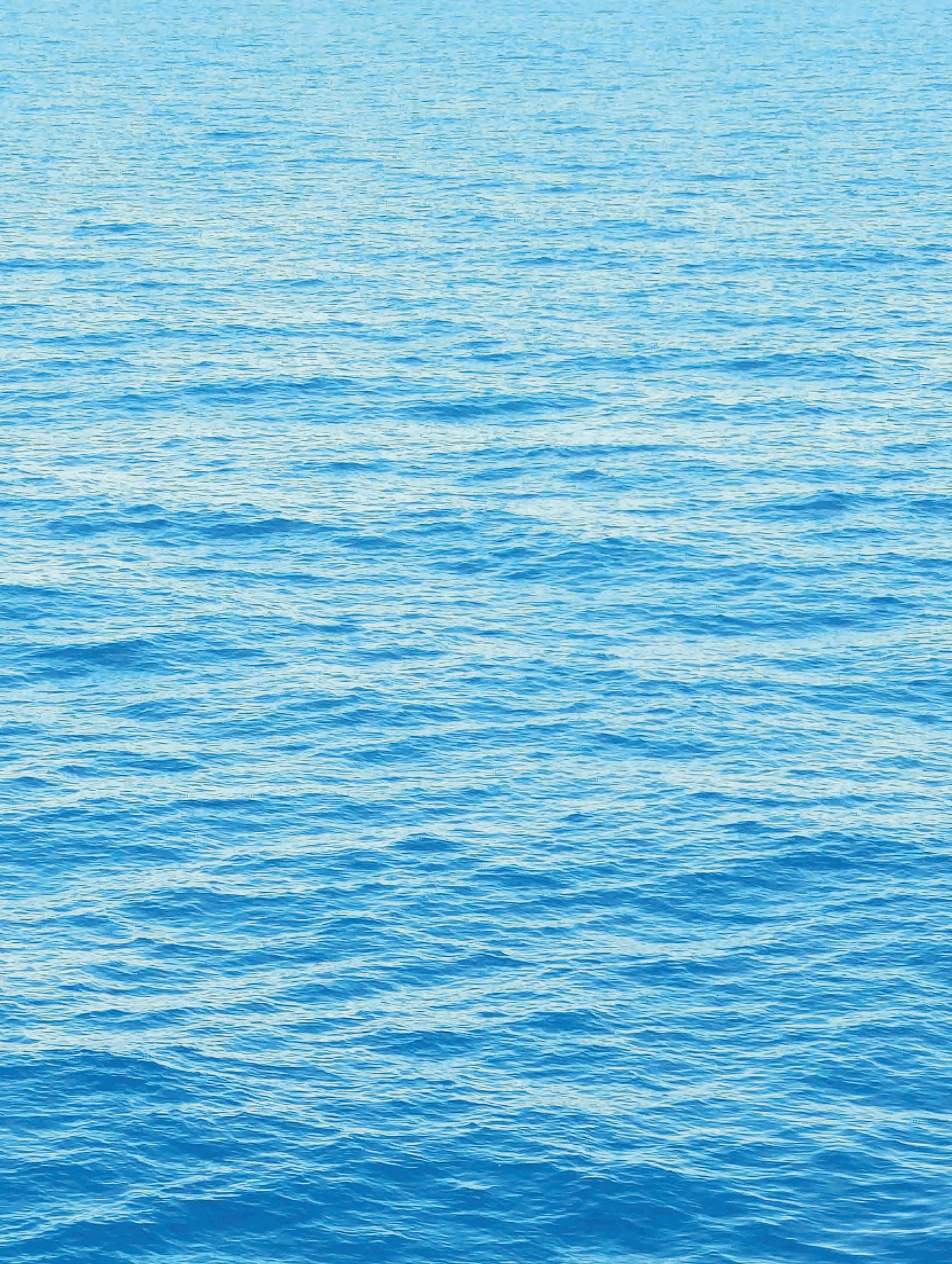


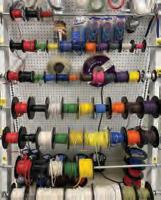







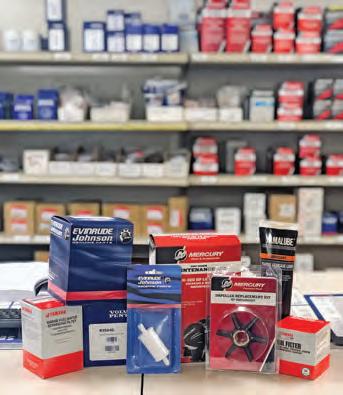
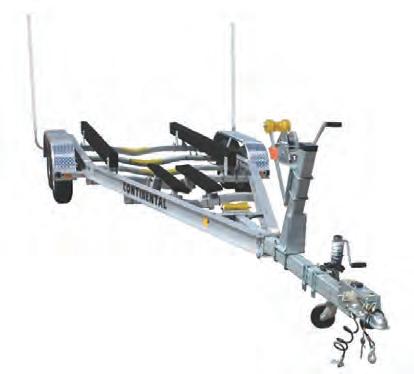







Four of Tampa Bay’s most sought-after species (seatrout, mangrove snapper, Spanish mackerel and snook) are in the midst of their annual spawn. This makes the catching easy. A few of these four can consistently be caught in the same location while one, not so much. I’ll break it down for you so, during your next fishing adventure, you can take home some dinner.
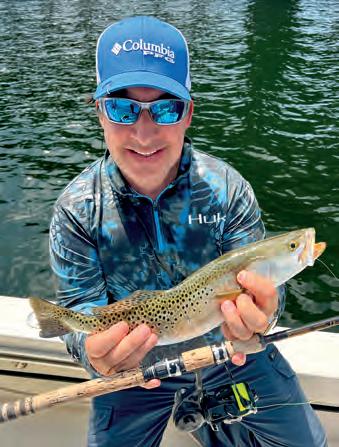
Seatrout:
This has been one of the best years for catching large spotted seatrout that I can remember. The deep-water grass flats that are scattered throughout the Bay are littered with seatrout. Usually, the second you anchor the boat and cast out a bait, you’ll get a hookup. They’re that aggressive right now. To elevate the activity, do some cut-bait chumming. This draws more fish to your area and increases the chances of catching some Spanish mackerel, too.
Seatrout can also be

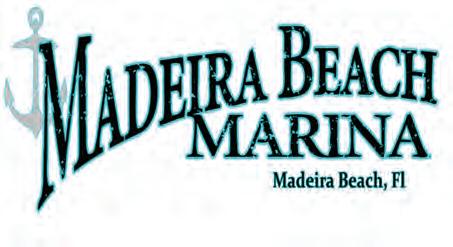



caught while fishing around one of the numerous bridges crossing Tampa Bay, and in areas in the middle of the bay where you wouldn’t expect them.
Size Limits:
Not less than 15” or more than 19”. May not possess more than one over 19” per vessel.

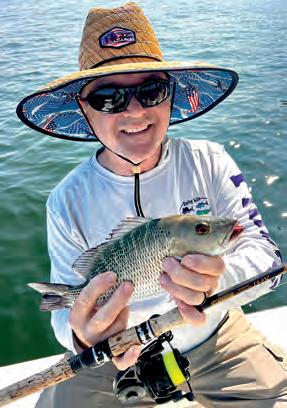
Undoubtedly, mangrove snapper is one of the best tasting fish Tampa Bay has to offer, and it’s on everyone’s hit list right now. During their spawn, they are super aggressive and will fight over a bait to see who gets it first. This aggressive behavior enables bag limits to be reached in short order, allowing you to move on to other species.
Mangrove snapper can be caught over artificial reefs, along jetties, around bridge pilings and along mangrove shorelines adjacent to deep water drop offs. As usual, chumming helps to get the action going, so don’t hesitate to start cutting up some bait. Once the chum slick gets flowing, don’t surprised if
Continued on page 6


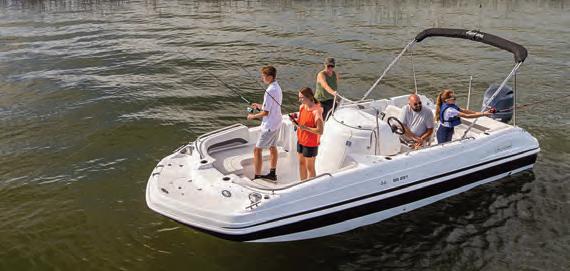









BY: CAPT. ANTHONY CORCELLA

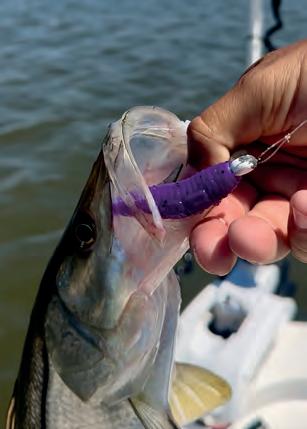
What a day! Everything started off decent; we were on the fish. Snook and reds were cruising the shorelines but, after a few fish, the bite was just shut off. The fish were not having anything we were throwing at them. That was until my good friend Jason said, “Let’s try something new hitting the market. You have to try these!” He grabbed a rod with a 2500 Shimano, tied on a white Mission Fishin jig head with a 20-pound Seagar flouro leader and attached a Q8 Super Bait Super Shrimp in purple. I smelled it, of course, because why not right?!
The bait has an unusually good smell. I know weird, right? But it smelled pretty good.
I leaned back and launched this thing out, let it sink to the bottom, twitched once and fish on! For the first time in the area, I caught a flounder. I have never caught flounder there before. I quickly released the fish and cast back out and let it sink. Bam, fish on again! Didn’t jig it or anything and landed a 19-inch spotted sea trout. I looked at Jason (who now works for the company after retiring from military service) as he was taking a trout off his Q8 Super Bait and he was nodding; I told you so.

We proceeded to catch one after the other. Another several flounder, loads of trout and a few ladyfish followed. Honestly, I haven’t ever experienced this much action on plastics as much as I love throwing them. The toughness is amazing, as well. Even with all these toothy critters, the bait was unfazed and looks like I just put it on. We then proceeded to use Q8’s Super Bullet Jerk Bait, which is a soft, but very tough jerkbait/fluke-looking thing. The redfish and snook loved them. They were outperforming my live bait. The bait uses “Bleeding bait technology” which has up to 12 hours of continuous scent dispersal. When you take the bait off, you put it back in the bag and it recharges itself and is plenty tough enough for reuse. I’m impressed.
If you are interested in annihilating fish with these, they are available at Riviera Bait and Tackle in St. Petersburg, FL or online at http://Q8superbait. com and use promo code JM15 for 15% off.
— What makes our charter service unique is that we cater to disabled veterans and wheel chair bound clients! Our boat is able to accommodate wheelchairs and is ADA compliant. IF YOU’RE A DISABLED VETERAN, YOUR TRIP IS FREE! This is our way of giving back to our veterans.
Capt. Anthony Corcella, Pocket Change Inshore Fishing Charter 727-432-6446 www.pocketchangefishingcharters.com
Check us out on Facebook, Instagram and TikTok

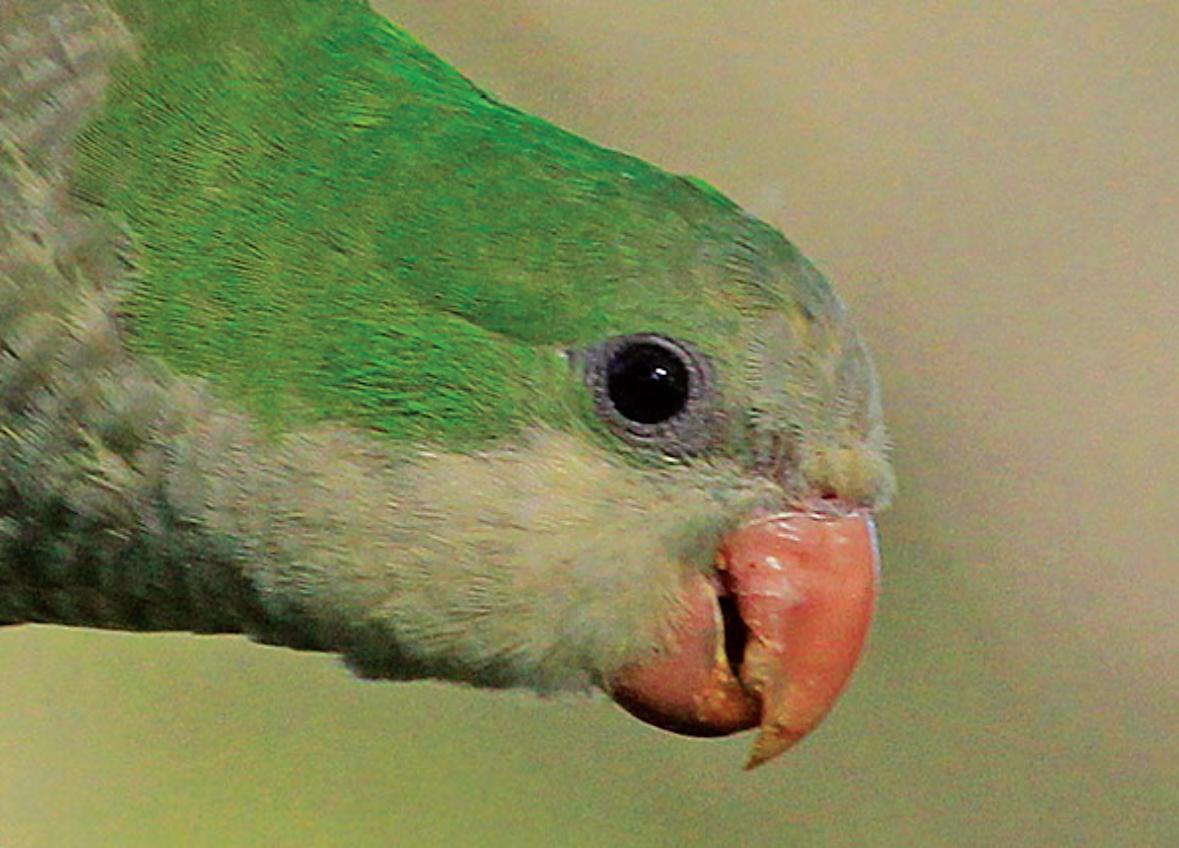

open. Birds like flycatchers or insect eating birds will have a much thinner bill to assist with more accurate prey catching. As you see in the picture of the prothonotary warbler with the cricket, it allows the warbler to be very quick and accurate.
Shorebirds, like this bar-tailed godwit, have long bills to help them probe deep in the soil to find marine worms that hide in the sand. The shorebirds have very sensitive bills to help them detect prey that they cannot see!
Check your yard out and see if you can identify what kind of birds you have to best determine the food to provide them!

Have you ever wondered why the bill or sometimes referred to as the “beak” are different shaped for

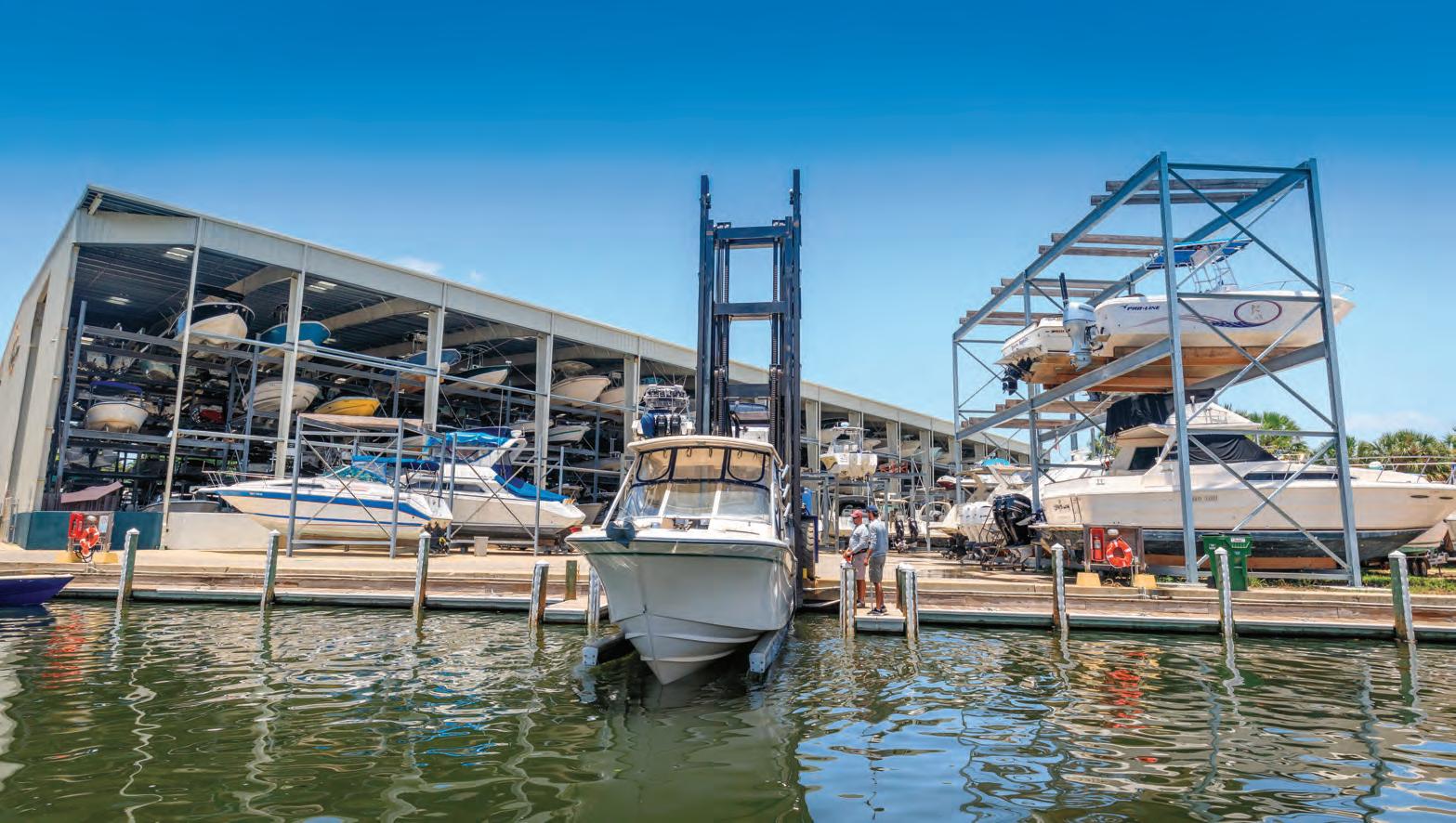
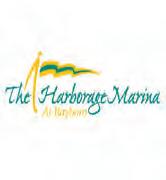
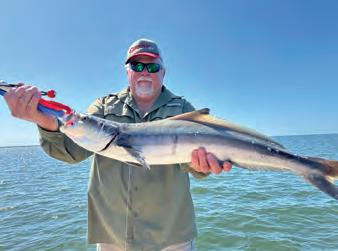
Cobia is a familiar sight in Tampa Bay all summer into late or mid-October, depending on water temperature. In Tampa Bay, they range in size from 30 inches in the flats to 48 inches around structure and wrecks. Cobia must be at least 36 inches long from the fork of the tail to be legal. The bag limit is one per person per day or a total of two per boat.
I have lost or landed over 23 cobia since the beginning of April, and almost every trip we have had a chance at one; so, maybe this could be the year. Overall, cobia fishing inside the Bay has been on a slow decline, whether from pollution or storms. I don’t have the answer, but this year looks great, and I hope it stays this way.
Greenback sardines, threadfin sardines, blue crabs, grunts and pinfish are the baits of choice. I find an area of grass flats close to a channel or drop off. I prefer the water depth around 2 to 4 feet. I then start by chumming for the bait with a mixture of tropical fish food, menhaden oil and some salt water mixed to a cream of wheat texture. The secret to chumming is not to feed the bait, but to attract them to the boat. I prefer to use a green 10-foot 3/8 mesh bait net. I find the color green works best, and I believe it blends better in the water and increases my catch.
A live well is a must to have on any boat, and if you don’t have one, portable units can be purchased at most retail tackle outlet stores. A good live well needs to be at least 26 gallons or bigger with a 700 gallon an hour pump--the larger the better. Most boats come equipped with a live well system from the factory or are ready. Unless you are a handy man type, I suggest you find a local shop to install it. Most applications require making a hole through your hull to install a pick-up tube--not something I am inclined to do myself.
Ok, now that we have caught our baits, what are we to do next? That’s simple. Start cutting some bait (greenback sardines) in half and make a large pile on the cutting board. Start by tossing pieces in the water around the boat. Remember you are anchored in 3 to 4 feet of water. Now just wait for rays to start showing up. Southern rays or brown rays are attracted to your chumming. Remember, cobia like structure and are lazy to feed, but as the rays move in on the scent of the chum, with them come the cobia. Rays stir the bottom up with their wings in order to feed, and this brings up all the small shrimp and crabs and pieces of chum to the surface of the flats.
The Cobia will be just under the rays, or next to them picking the pieces of bait the rays leave behind. Toss a live pinfish, greenback, shrimp or crab at them and hold on. A word of caution: leave the bail

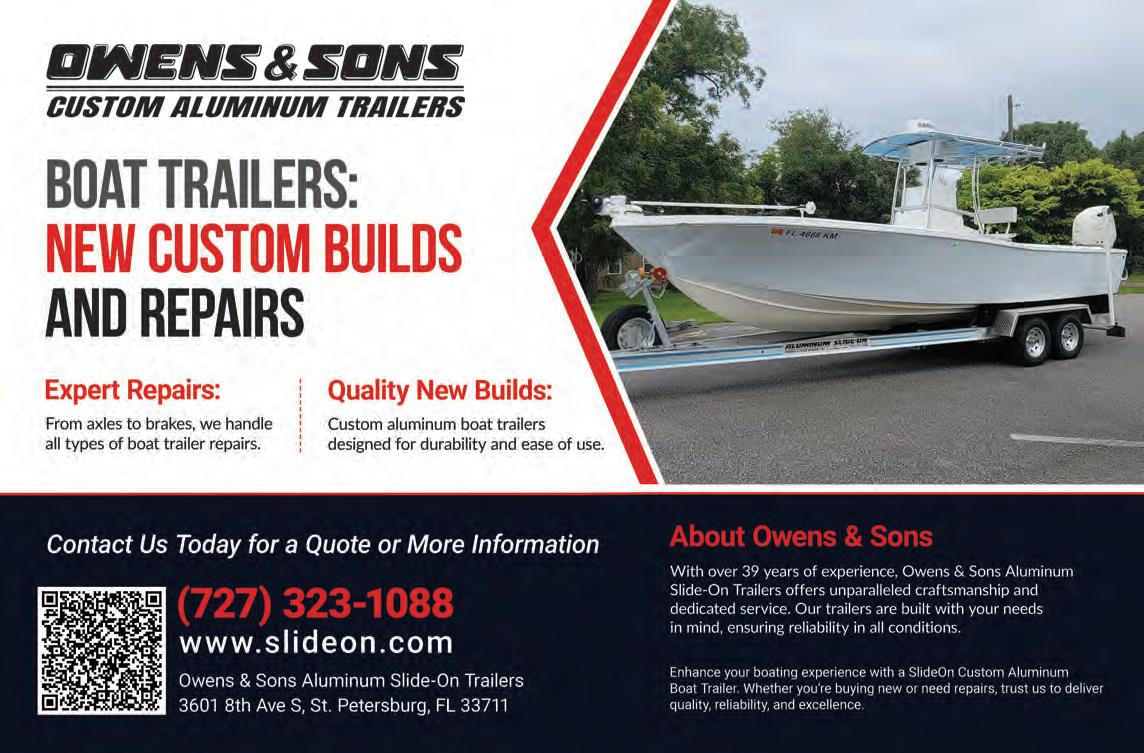

open on the reel until the cobia gets at least 20 feet from the boat before you set the hook, or they will head for the nearest structure which is your boat. I have several broken rods at home to remind me of this costly mistake.
Another technique that comes to mind when someone says “cobia fishing in Tampa Bay is buoy tending.” This is the ritual of running from one buoy (channel markers-range markers) to another looking for cobia hanging around them during the slack tide periods. Cobia are a structure-oriented fish that like wrecks, buoys and anything that creates a shadow line. The term “early bird gets the worm” applies in this case--the first anglers to the buoys have the best shot at catching them.
Approach up-current from the marker with live bait ready to go. When the cobia is sighted, toss up-current allowing the bait to drift towards the fish rather than throwing the bait on top and spooking it. I use a large float such as a Blue Water Thunder with three feet of 50-pound test fluorocarbon leader and a 3/0 circle hook. Cobia can be picky eaters and some cases refuse your offer. Don’t waste time, run to the next buoy or range marker and start all over again.
On the flats I prefer a medium action spinning outfit with 20-pound test braided line, 40- pound fluorocarbon leader and 3/0 circle hook. Around the buoys, a heavier outfit is needed. I use a large spinning outfit with 40-pound test braided line and 50-pound test fluorocarbon leader with a 3/0 or 4/0 circle hook.
— Capt. Sergio Atanes is host of Florida West Coast Fishing Report on Facebook and YouTube. He also hosts Fishing Adventures Florida TV show airing on YouTube, Waypoint TV, Carbon TV, Outdoor Action, and Angling TV. Owner of Reelfishy.com Charter business covering the west coast of Florida with over 135 captains on staff. For information contact Capt. Sergio at (813) 973-7132 email: atanes@msn.com.

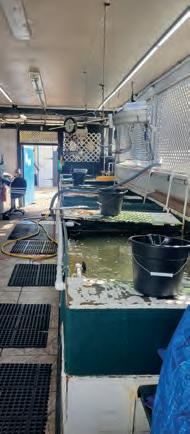


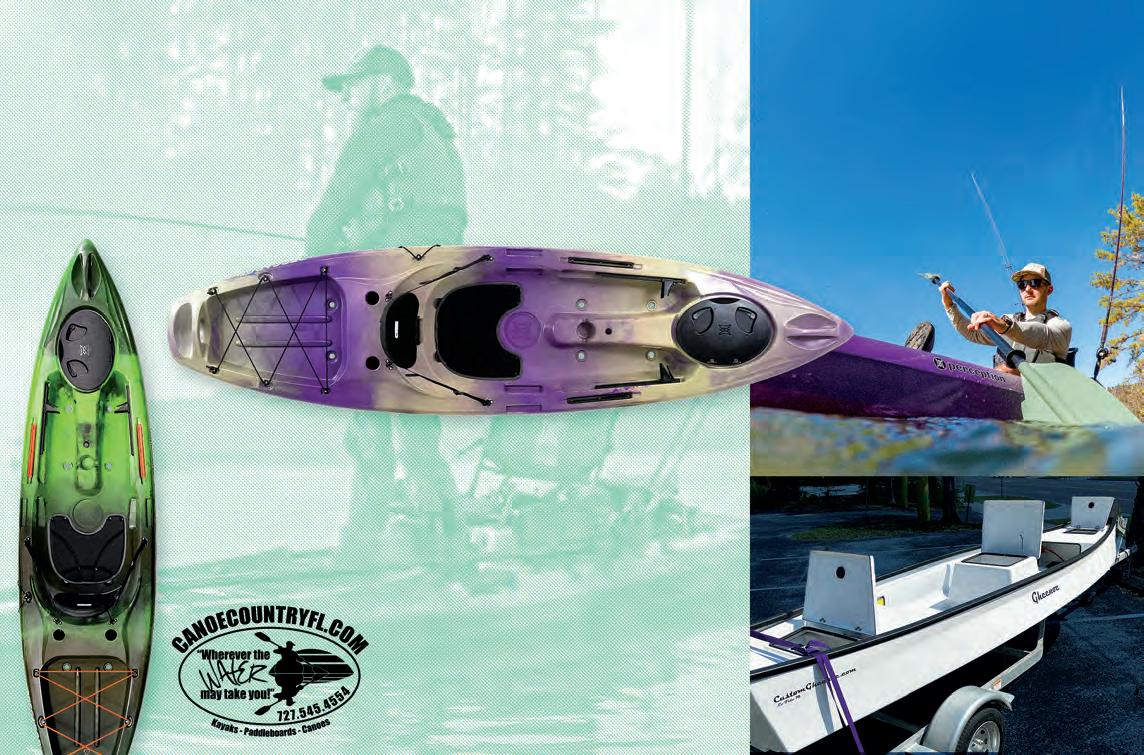

you start catching some seatrout or Spanish mackerel.
Size Limits:
Minimum size is 10”. Bag limit is five per harvester.
Spanish Mackerel:
Spanish mackerel are all over Tampa Bay and are constantly on the feed. Artificial reefs and some of the deep-water shoals scattered throughout the bay are among the best places to target them. Once I anchor, the chumming begins. Without a doubt, chumming is the best way to draw them to your boat. Like I said last month, “If you don’t chum, they won’t come.” Another thing that helps to catch more mackerel, don’t use wire leader. Since the boat is anchored and not trolling, wire leader is more visible to the fish, and they avoid the bait in most cases. Instead, use a three to four foot section of fluorocarbon leader and a 2/0 long shank hook. Sure, you will get a few cut offs, but your hookup ratio will increase tenfold, and you will land more fish.
The bag limit on Spanish mackerel is insane. In my opinion, nobody needs to keep their daily limit. They don’t freeze well unless you smoke them first and they taste the best if you eat them within two to three days from harvest.
Size Limits:
Minimum size 12” fork length. Recreational daily bag limit per harvester, 15.
Snook:
The snook spawn is in full swing, which makes catching them extremely easy. It’s also why they’re closed to harvest, to protect the breeders. Snook stack up in passes, along jetties and some mangrove shorelines during the summer to spawn; and, with so many fish in one spot, it’s not hard to get a hookup. For the most part, I avoid snook fishing during this time, so they can do their thing. You know, make baby snook.
However, if I get clients onboard who have never caught a snook, I will target snook for a portion of the trip. When doing so, I’m incredibly careful how I handle the fish. Once one is boat side, if I’m not taking a picture, I just de-hook it while



it’s still in the water. If a picture is requested, I have the person wet their hands and hold the fish horizontally while supporting the belly of the fish. Once I take a quick photo, the fish goes back in the water gently for the release. Never, ever,
hold a large snook vertically by the lower jaw at any time. Doing so is a death sentence, because it pulls on its internal organs. Even though it may swim off and look fine to you, it dies shortly after. It’s called “cryptic mortality.” Google it!
Size Limits:
Not less than 28” or more than 33” on the gulf coast. Closed to harvest until September 1.
Afishionado, “Adventures in Fishing.”
—Tampa Bay fishing guide Wade Osborne of “Afishionado Guide Services” has been plying the waters of Tampa Bay as a professional full-time captain, since 1997. Capt. Osborne offers inshore fishing charters on light tackle spin, fly or plug. He also offers eco-tours with an emphasis on photography. For more info., visit Afishionado.com or find Afishionado Guide Services on Facebook and Instagram. Email: wade@afishionado.com Call/Text 813-286-3474




BY: CAPT. JOSHUA TAYLOR

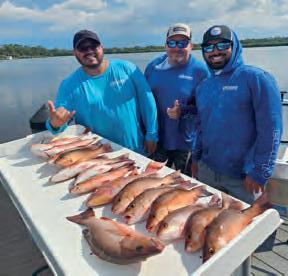
Tampa Bay's winding network of mangrove estuaries, submerged ledges and manmade structures provides an ideal habitat for mangrove snapper. These aggressive predators feed on crustaceans and small baitfish hidden among mangrove roots and coral debris. From June through September, particularly around full moons, mangrove snapper migrate to shallow, structure-rich flats to spawn. During this period, anglers can often reach the daily limit of five fish with ease, provided each measures at least 10 inches, as required for in-bay harvests.
Commonly referred to as "mangos" or grey snapper, mangrove snapper is one of the most popular inshore sportfish in Tampa Bay. Available yearround and widely found around docks, shipwrecks, oyster bars and mangrove shorelines, they offer consistent action for anglers of all experience levels. Their aggressive strikes, schooling nature, and excellent table fare make them a top target for both casual and seasoned fishermen.

For the ideal mangrove snapper setup in Tampa Bay, a 7-foot medium-light to medium-action spinning rod paired with a 4000-size reel works best. I prefer an Okuma SRT with a 4000 Okuma Salina reel. Spool your reel with a 15 to 20-pound braided line connected to a 20 to 30-pound fluorocarbon leader. It's smart to start heavier and scale down to 15-pound, if the bite is slow or the fish are finicky. Circle hooks in the 2/0 to 4/0 range or size #1 Daiichi hooks are preferred, as they minimize gut hooking and improve hook-up ratios. When it comes to weight, use just enough split shot or an egg sinker to keep your bait close to the structure--too much weight can reduce your chances of getting bit. Snappers have extraordinary eyesight, making them a significant challenge in clear water.
Mangrove snappers feed aggressively on shrimp, crabs and small baitfish, so your bait selection should match their natural prey. Live shrimp rigged through the tail, small pinfish or pilchards are all excellent options. Dead bait also works well--cut shrimp or baitfish into chunks and release a steady chum line to attract snapper into your target zone.
To fish them effectively, start by chumming lightly, but consistently, to draw fish out from the structure. Anchor near key habitat areas like mangrove shorelines, docks, oyster bars or bridges, and cast your bait close to the structure. Focus your efforts during moving tides, as rising or falling water encourages snapper to feed. Once your bait is in the water, let it settle within a rod's length of the bottom and stay alert; mangrove snapper often strike quickly, sometimes just after the bait hits the surface. You’ll find mangrove snapper fishing both fun and rewarding.
— Capt. Joshua Taylor is a professional angler, apparel designer, and influencer whose passion for fishing and dedication to storytelling meet. With years of experience on the water and behind the pen, Joshua ensures each issue is packed with expert tips, local reports, and stories that resonate with the angling community. Connect with Capt. Joshua Taylor: joshua@saltyscales.com | www.saltyscales.com | Follow on Facebook: facebook.com/SaltyScales | YouTube: youtube. com/saltyscales | Instagram: instagram.com/saltyscales | TikTok: https://www. tiktok.com/@saltyscales


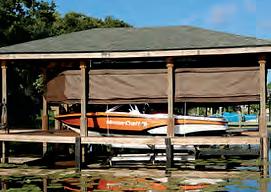




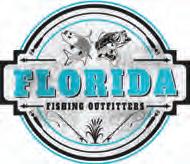

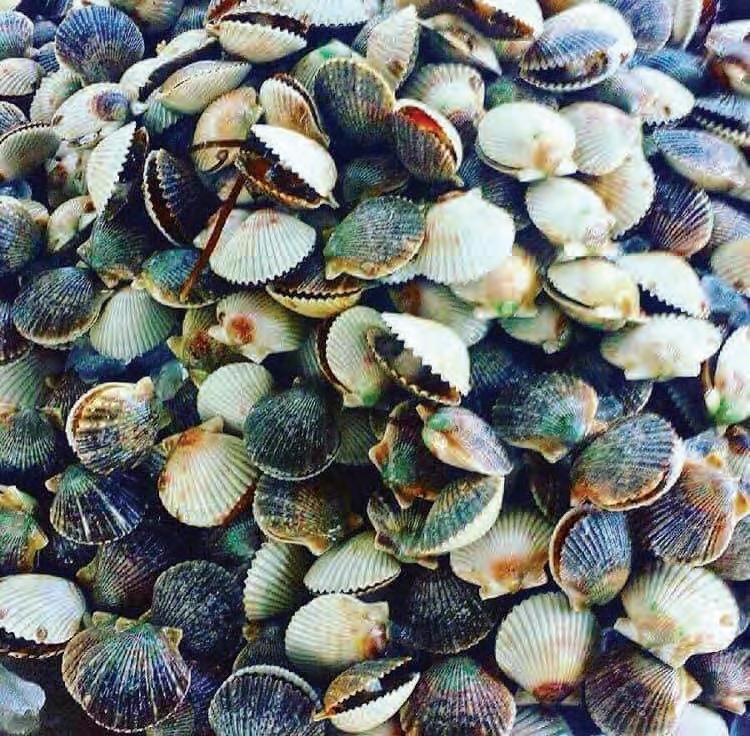




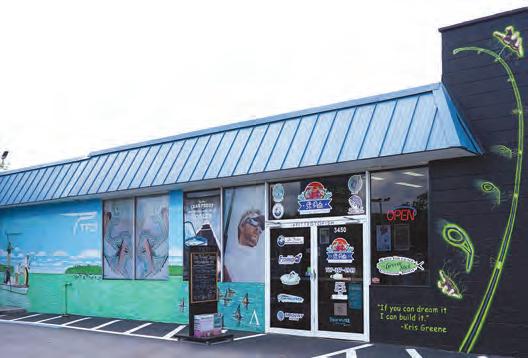


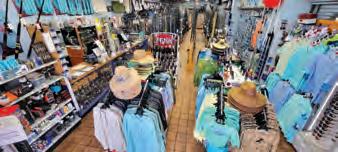


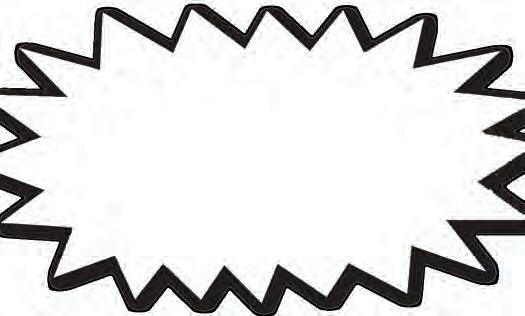


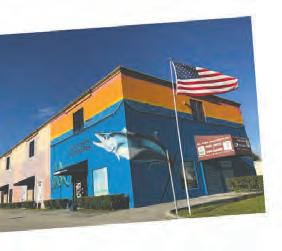




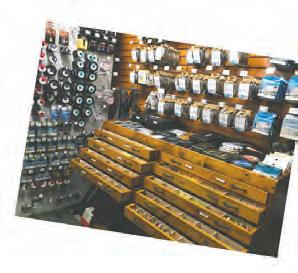


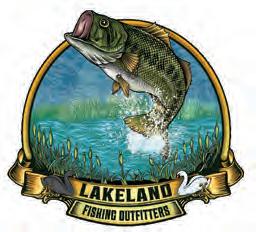

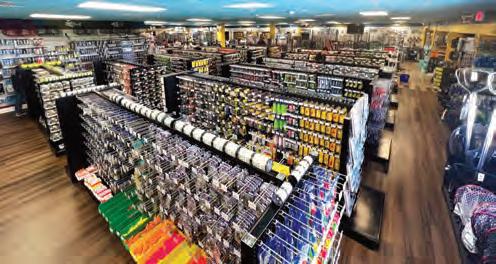






SBY: CAPT. GEORGE HASTICK
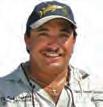
hoals in our oceans and waterways are magnets for many species of fish. They attract baitfish which, in turn, attract predator fish of all sizes. In Tampa Bay, we have natural shoals, and we also have man-made shoals. Shoals are rises in the seabed floor that can raise up sometimes just below the water’s surface and sometimes above the water’s surface. Sandbars are a type of shoal that also attract fish. Natural shoals are formed by the currents, and the man-made shoals can be from dredging channels in the Bay and depositing it in a line forming a shoal that can be made of varied materials, one of which is limestone. Limestone and rock attract grouper, snapper, mackerel and even king mackerel, especially along the shipping channels running up into Tampa Bay from the Gulf. All the channels and the shoals (spoil areas) along the edges of the channels can produce fish. B Cut and Port Manatee channel are areas that can produce some whopper fish.
...side of the Bay will hold trout but, this time of year, you will also get tarpon and cobia cruising the edges looking for a meal.
Now, shallower areas like sandbars, many times, will have lush grass as they drop down to the depths in Tampa Bay. There are many sandbars inside Tampa Bay from the mouth of the Bay all the way to the northernmost part of the Bay. Many of these sandbars and underwater shoals will also have oysters, coral and shell on them which attract a variety of fish from small trout to the largest of tarpon, so there is something for everyone.
What is nice about the underwater shoals is that they are
Continued on page 12
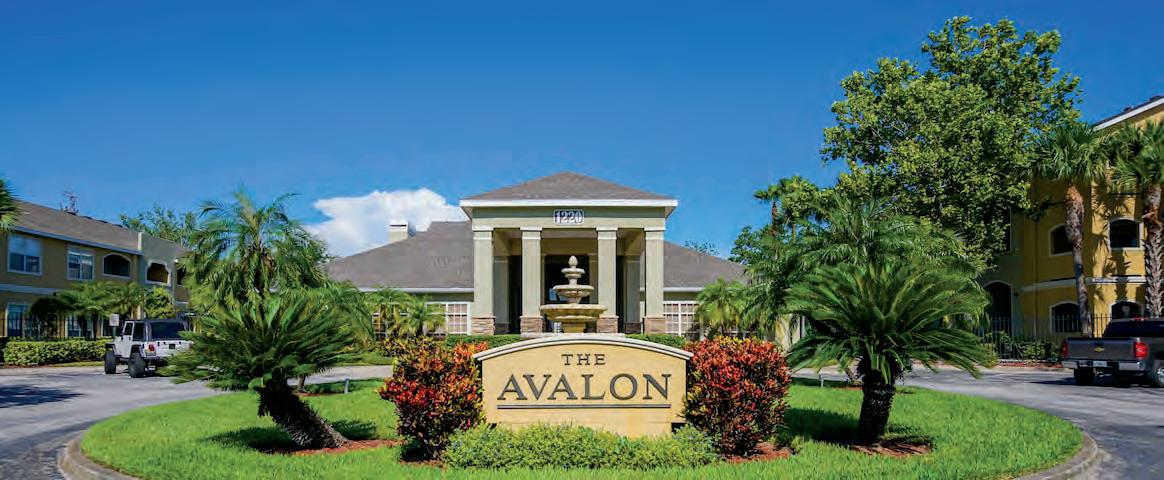




Coast to Coast
Ground Floor, FULLY FURNISHED, turnkey and ready to generate income. This beach-themed 2/2 condominium has a solid rental history and is situated within a pet-friendly, all-ages, GATED COMMUNITY which allows WEEKLY RENTALS and is only 3.5 miles from award winning CLEARWATER BEACH!


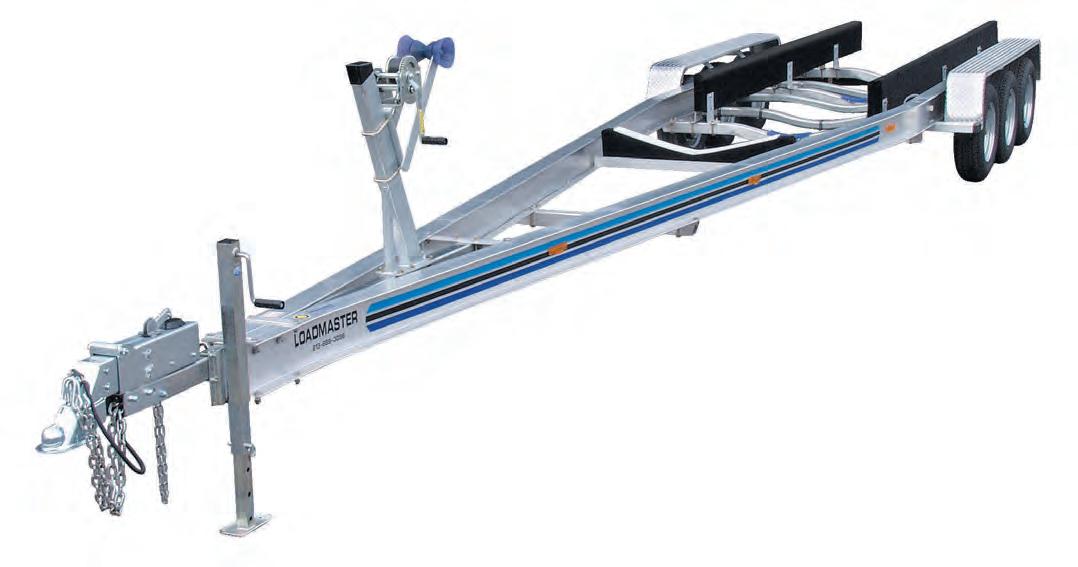




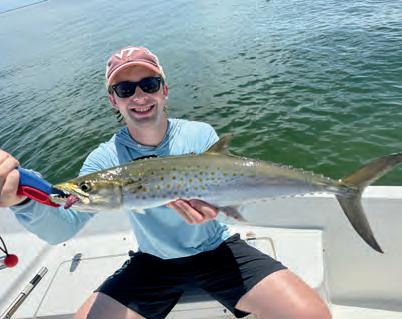
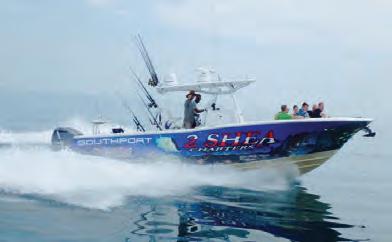


not obvious fishing spots. These are spots that you will have to find by exploring and using charts to find. Once you find a productive shoal, it will usually repeat every year with the seasons. Take note of what you’re catching, the time of year and water temperatures, since these factors are key for that spot for the fish. Also, that same shoal or sandbar will hold different species during different times of the year, but will have a seasonal pattern. Keep notes, because once you figure out that pattern and what fish are there at that time, it will usually repeat every year.
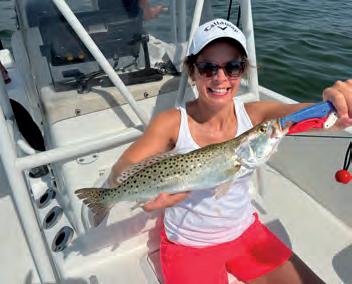
Shoals will have deeper water around them, and sandbars will drop off into deeper water. What this means is that you can catch very large fish in shallow water, since it is adjacent, many times, to open water. For instance, the sandbar running from Pinellas Point North on the St Pete side of the Bay will hold trout but, this time of year, you will also get tarpon and cobia cruising the edges looking for a meal. At different times, you will also have schools of large black drum that head north from the clam bar area and follow the sandbars all the way up the Bay to Gandy and Howard Franklin bridges. Many times, in any of these areas, you can put a live threadfin or scaled sardine out under a cork while fishing a soft plastic like a sea shad on a ¼ once jig head to cover area and, suddenly, you could have a large tarpon, cobia or shark on the line. Give a shoal a try you won’t be disappointed
— Capt. George Hastick of “Fish Hunter Fishing Charters” in St. Petersburg, Fl. is the co-host of Florida West Coast Fishing Report and co-hosts Fishing Adventures Florida which is on five streaming channels and You Tube. He has been fishing the waters of the Tampa Bay area for over 40 years and guiding over 20 years.
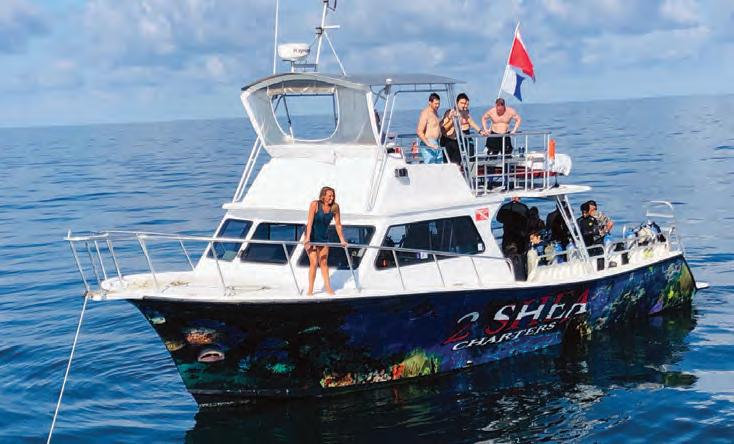
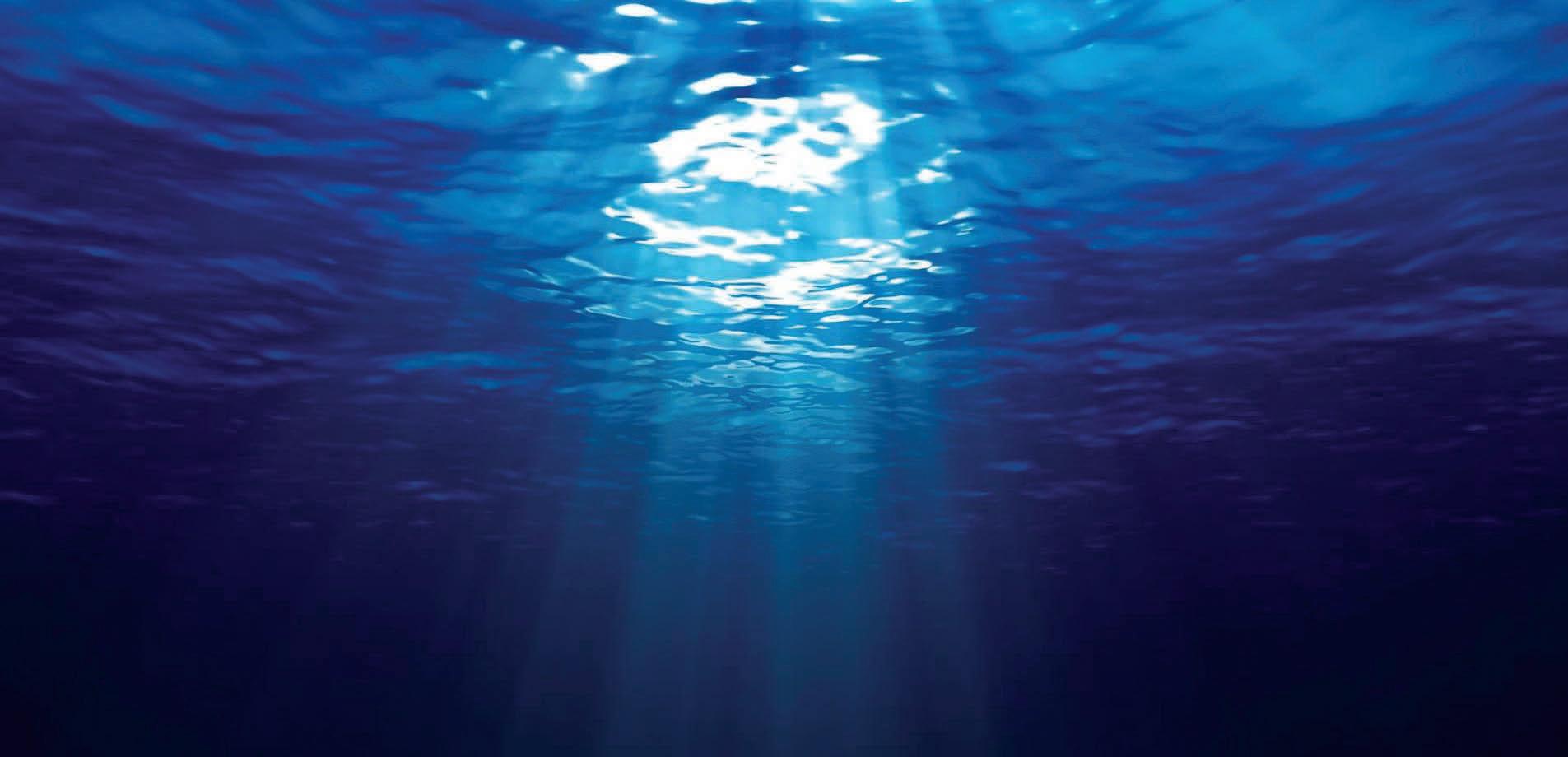


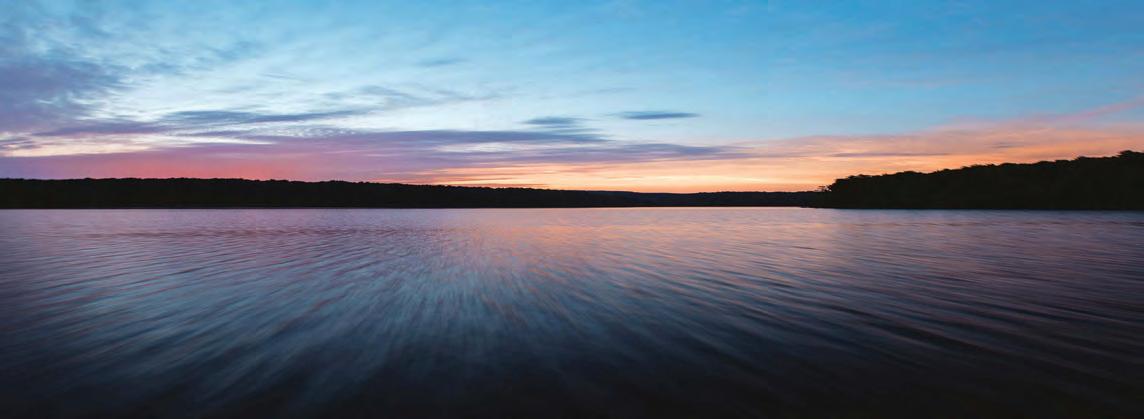




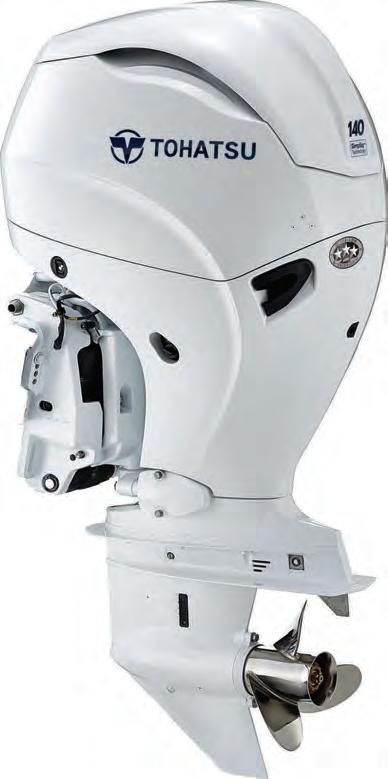
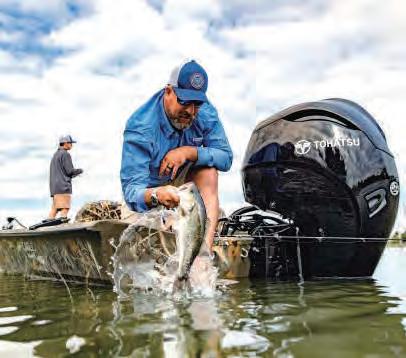
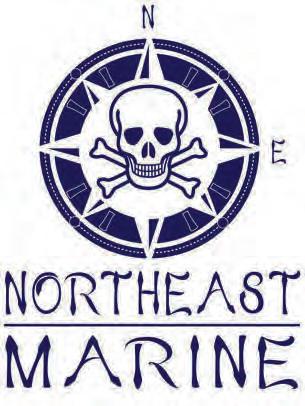

2
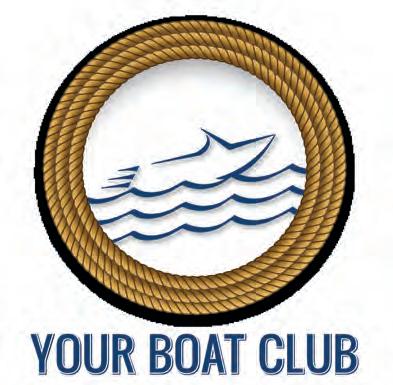







































9
5
1














12
13
14
15
18
19
20 Sun 8:23 3.2 11:04 2.3 2:34 1.7 4:23 0.0 6:45 8:29
21 Mon 9:24 3.3 3:41 1.8 5:30 -0.2 6:46 8:28
22
23 Wed 1:09 2.4 11:25A 3.4 5:52 1.8 7:21 -0.3 6:47 8:27
24
25 Fri 2:27 2.5 1:14 3.4 7:41 1.5 8:45 -0.1 6:48 8:26
26 Sat 2:59 2.6 2:03 3.3 8:29 1.3 9:22 0.1 6:49 8:26
27 Sun 3:29 2.6 2:51 3.1 9:14 1.2 9:55 0.4 6:49
28
29 Tue 4:24 2.8 4:26 2.8
30
Ingredients:
• Salmon filet
Directions:
• Broccoli heads
• 1stick of butter • 1 lemon • 4 egg yolks




















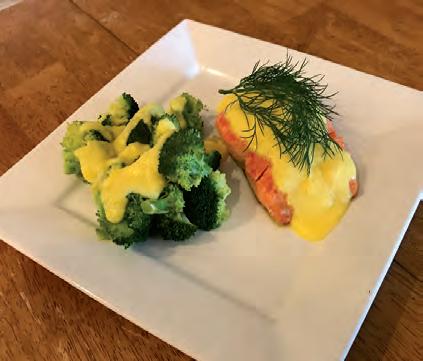
Bring water to a boil. Place broccoli in water and leave until bright green. Remove from heat and let sit.
To make the sauce, separate the yolks from the whites. Set whites aside. Whip the yolks. Melt one stick of butter in microwave or on the stove. Squeeze juice of one lemon in whipped yolks. Using a double boiler, set heat on stove at medium. Place yolks in double boiler. I mix my eggs in mine. Take butter and slowly add to egg yolks while stirring. The mixture will thicken and blend. If it should become too thick just add a tablespoon of water. Do not let egg cook. Remove from heat and let sit.
To cook the salmon, put heat to medium-high. Place salmon, skinside up, in the skillet. Cook until golden brown (about four minutes). Turn salmon over and heat until it feels firm to the touch (about three minutes or more if you want the skin crisp). I like it this way. Spoon your sauce over the fish and broccoli. Garnish with fresh dill for color and taste. If you are following a Keto or Atkins type diet, this fits the bill. If not, you can add rice or potatoes. Enjoy



































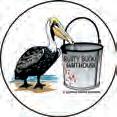


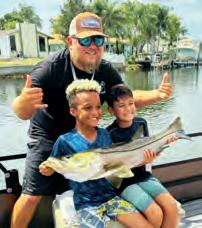
By: Joshua Broer,

When I was a young boy, I’d run around the bayous of my hometown, Tarpon Springs, harvesting everything I could. Cast netting mullet, scooping blue crabs off old sea walls, snorkeling grass flats for bay scallops, fishing bridge pilings for sheepshead and more; the Anclote River and connecting bayous were a paradise rich in sea life and seafood. I loved my daily inshore hunt, but there was a deeper calling.
What I truly longed for, deep down in my soul, was to deep-sea fish. The blue water experience was something I could not get enough of. My first offshore trips were on party boats that left from the Sponge Docks. The Miss Milwaukee and the Two Georges deep-sea fishing boats allowed me to spend a day offshore for a mere twenty bucks (in the late 70s/early 80s that is). Even before launching, just being at the docks was special for me. The smell of shrimp boats and lines of sponges drying in the hot summer air, the deck hands prepping the boat with bait and tackle, the aroma of authentic Greek food from the local restaurants; it was all magical.
Before the boat left the dock, I studied the layout. The old-timers always had the best spots, directly over the transducer. These salty and grizzled old guys always brought their own rods and bait; I was happy to use the boat rods. They would always let me squeeze in at the rail for a better drop, which made me feel like a king at such a young age.
The long, slow chug to the fishing grounds was as special for me as the fishing itself. Watching the water change from dark green to turquoise blue, I knew we were getting close. Watching seagulls drafting the boat and flying fish sailing on both sides, looking to the horizon of the endless sea; I couldn’t be happier.
Mostly, I caught grunts. The regulars at the back of the boat reeled up gag grouper, but it didn’t matter too much what I caught. When that rod bent, I was a kid at Christmas every time. For this youngin’, travelling into a completely different world, a wide-open landscape as far as the eye could see, was where I belonged. Luckily, unlike some others on the boat, I didn’t get seasick, which made me feel even more connected to the ocean.

the excitement and anticipation are the same, as I begin to imagine the trip. Greeting the crew, loading the boat, pulling pinfish traps set the night before, the long run to the good haunts; this will always be my great escape. Whether big gag or red grouper, American red snapper, mangos, trigger fish, hogfish, etc., every drop is hope that something big is going to bend the rod over the rail. I enjoy figuring out the right bait at each spot. With a live well full of pinfish and a cutting board full of thawing squid and sardines, the mystery of what will work best never gets old.

Fast forward to my adult years, in which most days on the water are spent on a flats boat. I rely on close friends for offshore invites these days. When I get the call, I immediately begin prepping my tackle. Like my childhood,
This year, the State of Florida has provided us with an expanded 126-day ARS season that is the longest since the state took over management of Guld red snapper. The summer season will run from June 1 through July 31, and the fall season will run from specific monthly dates from September through the end of December. Please check the FWS website for detailed information on these dates. The daily bag limit is still 2 per person (included in the 10 per harvester per day state snapper aggregate bag limit).
The ocean, the deep blue sea, whatever you call it, is home to me.
— Joshua Broer, a Tarpon Springs native, is the Facility Manager for the College of Arts & Sciences at USF. His specialties include flats and bass fishing, fly fishing, and sea kayaking. Reach him at joshua.broer@gmail.com.

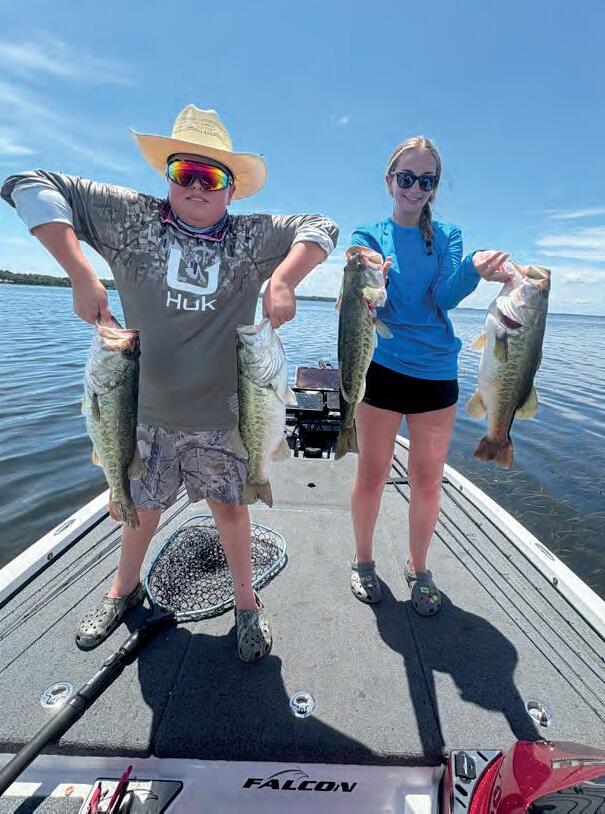
deeper, I look for things like brush piles, rock piles, shell bars and grass patches. To find these things, look at a contour map and select some points; tighter contours, ditches, flats and saddles. Make sure to make use of side scan, when looking for the schools of bass offshore. This time of year, just like in June, it’s crucial to target them with an aggressive presentation like a crankbait, worm, lip-
The month of July is a great month to get out and do some bass fishing. July fishes very similar to the month of June. The bass are looking to feed, school and get super aggressive. The weather warming up also contributes to this part of this phase. This leads to more bass being out deep and offshore, but shallow fishing can still play a role this time of year. When fishing offshore or out



less crankbait, chatterbait, jerkbait, topwater or a soft plastic.
BY: CLAYBURN REED

When fishing shallow, I am targeting hard cover or hard bottom where I think the bluegill spawn will be happening. The bluegill spawn can hold some very big bass and is usually overlooked by anglers. To find spawning bluegill, listen for the popping sound they make on top of the water; or, make use of side scan to see the group of little potholes. I target these fish with a bluegill glidebait, swim jig, soft plastic worm, chatter bait, a popping frog or a dropshot. July is one of my best times of year for my customers catching numbers and trophy bass. Get out and do some fishing! Contact me for a guided trip in Central Florida.
— To book a trip or for more information call me at 352279-1307 or at instagram@clayburn_reed_fishing.




July 24th - 26th 2025


TheSuncoast Ladies’ Classic empowers women through fishing, creating lasting connections in the angling community while promoting fun and inclusivity. We grow the sport by hosting monthly seminars, providing networking opportunities, helping women join tournament teams, and ensuring every angler is confident and ready to fish, often with the help of a trusted captain. We're proud to partner with CCA STAR and Ready for Life, supporting both conservation and community impact.
Interested in fishing our tournament but not sure where to start? We’ve got you covered! Whether you’re a seasoned angler or a first-timer, we’ll match you with a team and/or captain.
Join us for this ladies only multi-species OFFSHORE tournament,


July 24-26,2025 at SkyBeach Hotel & Marina located; 6800 Sunshine Skyway Ln S, St. Petersburg, FL 33711
There will be live music all weekend long from our favorite Nate Mosley and other local artist! There will be raffles, auction items, 50/50 opportunities, and so much more!
Thursday, July 24, 2025 (6pm-9pm):
Captain's Party, Registration, Reading of the Rules, Vendors, Food, Raffles, Auctions, Live Music
Friday, July 25, 2025 (6pm-9pm): Cornhole Tournament and Live Music
Saturday, April 26, 2025 (Starts at 3pm)
Weigh in begins at 3 PM and is free and open to the public. There will be live music, raffles, auctions, vendors, and awards.







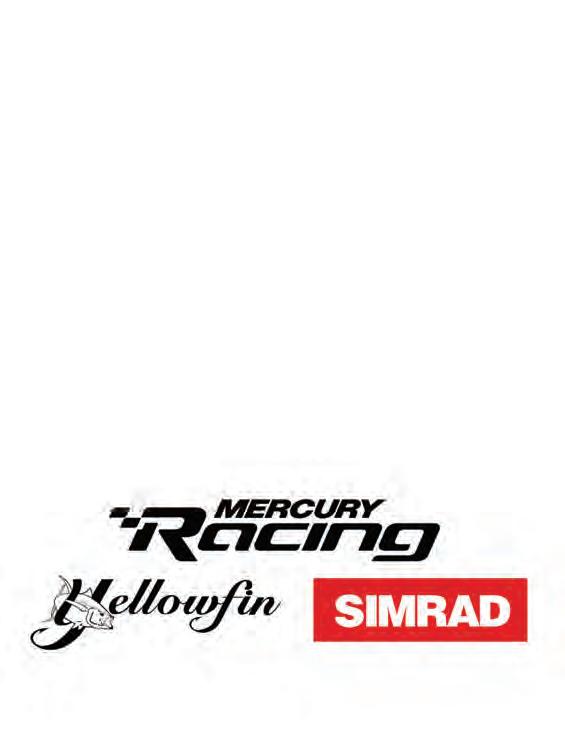

BY: CAPT. BILL RUTHERFORD

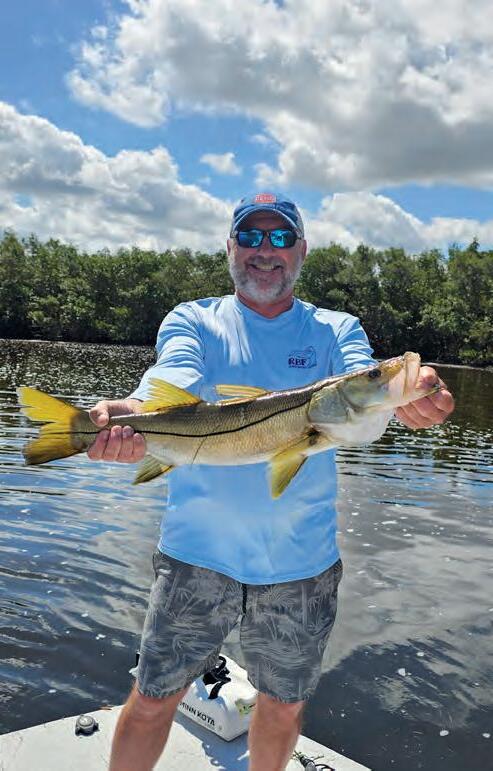
It is the most wonderful time of year for beach goers and anglers looking for trophy fish. Snook and tarpon trophies, that is.
Pods of giant tarpon will be scouring the beaches up and down the entire Gulf Coast, and there will be anglers from Key West to Pensacola and everywhere in between throwing lines at them. The best part about my region is that there is significantly less pressure on these fish than other areas; but, they are still smart! Hanging out on the west side of Anclote Key will offer the best chance at hooking up to one of these silver beasts, but you will see pods of them from the grass flats out to the public reefs. Crabs, mullet, ladyfish, pilchards, pinfish, grunts and a variety of artificial lures will all work, but these fish are very wary and can be hook shy, leader shy or just plain old not hungry. Targeting them in the early morning hours is your best bet, but even nighttime is productive, especially during a large moon.
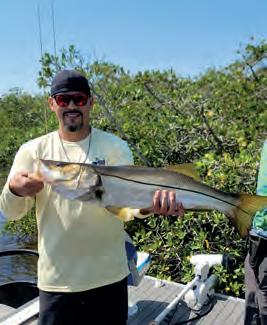

Speaking of fishing at night, there are some monster snook hanging out on these same beaches that love to feed at night. The early morning is also ideal; but, it isn’t uncommon for us to catch them from right between two party boats blaring music in the middle of the day! Big baits for these fish are what the doctor ordered. This is also a great time to dock light fish for snook. There are several neighborhoods in the region that have thousands of docks that these fish can hide in to ambush their prey. Go with your heavy gear on these fish, and load up with some pilchards or large shrimp, if you have an outgoing tide. `
Put those light rods away for a couple of months, and get out there and find yourself a trophy!
— Captain Bill is a Florida native who grew up fishing the Gulf Coast. Being a proud Army Vet himself, he founded a charity called VetCatch that takes disabled veterans on cost free fishing trips in the Tampa Bay area. He guides out of New Port Richey fishing a Bulls Bay tower boat as well as the custom 25foot VetCatch pontoon if needed for elderly/disabled fisherman.


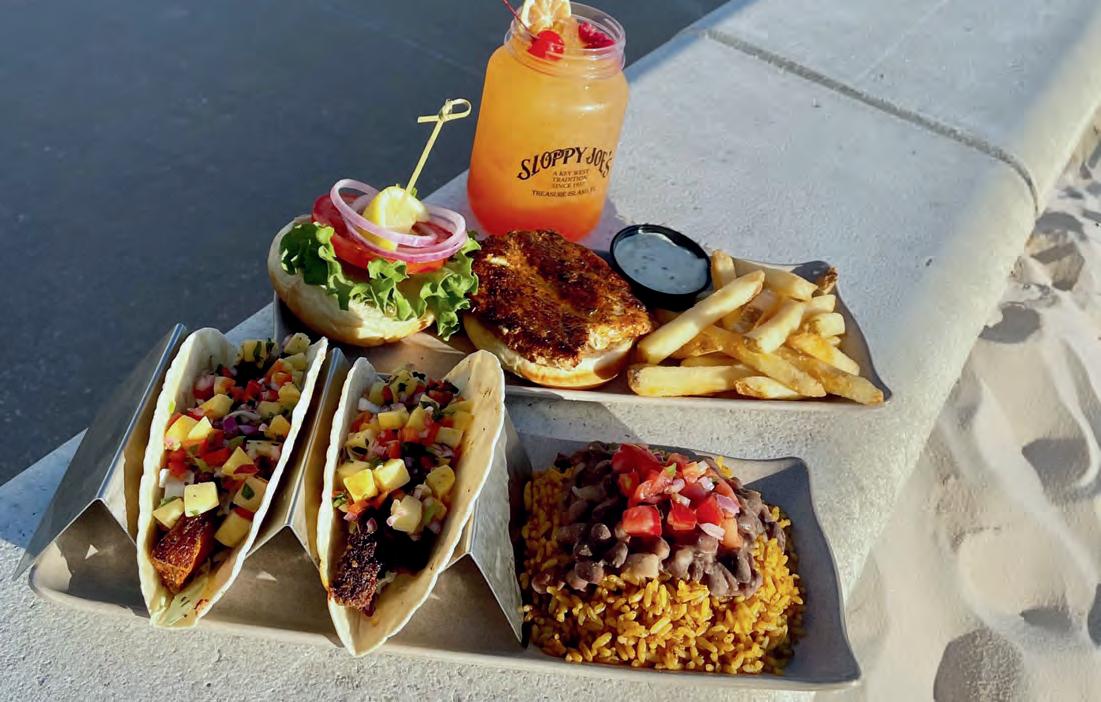



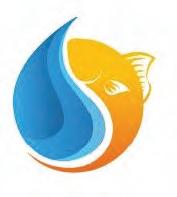

In early June, I had the privilege of attending the Florida Wildlife Corridor Foundation’s Corridor Connect Summit, held at Disney’s Coronado Springs Resort in Orlando. Over three days, conservationists, business leaders, scientists, and community advocates came together to face one big question: How do we balance Florida’s explosive growth with the urgent need to protect what’s left of our wild, working lands and waters?
It wasn’t just another conference. It was a Solution-Building Summit — filled with inspiring keynote speakers like Captain Leiza Fitzgerald, CCA STAR Tournament Director, Travis Thompson, Executive Director of All Florida (www.allfla.org) and Gary Jenkins, Director of Keep Florida Fishing (www. ASAfishing.org), interactive workshops, and real conversations with people who are boots-on-the-ground in this fight. And it was fittingly set within what’s called the Last Green Thread — the fragile link of protected land connecting the Everglades headwaters to the Green Swamp. This thread, like a delicate monofilament stretched tight, is vital for the future of the Florida Wildlife Corridor — and for the fish and wildlife we love.
The Ladder of Life: A Powerful Metaphor
One idea shared at the summit struck me so hard, I haven’t stopped thinking about it:
The Florida Wildlife Corridor is like one side of a ladder — the long spine of conserved land and water stretching through the heart of Florida comprised of 18 million acres of contiguous wilderness and working lands.
The other side of the ladder? That’s the Coastal Corridor — a vast, life-filled expanse where our estuaries, bays, mangroves, oyster reefs, and seagrasses merge into the open ocean, forming the final and most fragile link in Florida’s ecological chain.
The rungs that connect these corridors are Florida’s arteries — rivers, streams, lakes, forests, stormwater outfalls, and floodplains — channels through which life and water flow from land to sea. If the rungs and arteries are broken — if water can’t flow cleanly from land to sea — then fish can’t thrive, estuaries can’t breathe, and everything up and down the food chain suffers.
Including us.
As an angler, this visual hit home. We’ve all seen it: murky runoff clouding a flat, dead seagrass beds where snook used to cruise, or algae blooms pushing redfish out of their home range. It’s all connected.

Salt Strong is more than a fishing club; it is a movement to unite, inspire, and empower anglers nationally. Salt Strong Chapters are located from Texas to Florida to the Carolinas and offer the opportunity to Meet Local Anglers, Learn from Informative Speakers, Participate in Conservation Activities, and Win Awesome Giveaways. Go to SaltStrong.com to stay up to date and to learn more.
By: Darlene Shuman, PE, President of Salt Strong Alliance
That’s why Salt Strong Alliance’s Drive for Clean Water Initiative is more than a mission — it’s a movement. And it fits perfectly into this ladder concept. Every living shoreline we build, every oyster or clam we place in the water, every runoff reduction we help design, is a new rung on the ladder. Each project, no matter how small it may seem, helps reconnect inland ecosystems with our coastal estuaries.
Anglers are on the frontlines of this battle. We see the changes season to season, tide to tide. And we’re uniquely positioned to lead the way forward - and you can be part of the solution.
Florida is growing faster than any of us can truly grasp. But with growth comes responsibility. The Corridor Connect Summit wasn’t just about protecting wilderness — it was about protecting what connects us all: clean water, thriving fish populations, and access to the outdoors.
This idea of a Coastal Corridor being the missing side of the ladder brings clarity to everything I’ve been working on with Salt Strong Alliance. It’s not just about restoring habitat — it’s about connecting it, from ridge to reef, one rung at a time. So the next time you’re out fishing and you see an oyster bar filtering the water, or a patch of seagrass swaying with pinfish, or a mangrove prop root sheltering a juvenile tarpon — know that you're looking at a rung. And together, we can rebuild the whole ladder.
Drive for Clean Water. Fish for the future.

The future of Florida fishing starts with clean water — and you can help protect it with just one raffle ticket!
From Swamp to Shoreline, Florida’s rivers, creeks, and wetlands flow straight into the coastlines where we fish. That “ladder of life” only works if every rung is strong — and that’s exactly what Salt Strong Alliance is building.
Want to win the ultimate shallow-water skiff
AND protect our Coastal Corridors?
Here’s your chance — and now it’s BOGO:

Buy One Ticket, Get One FREE — double your chances to win, double your impact.
This isn’t just about winning a dream boat — it’s about taking action. As anglers, we’re the first to notice when the bite dies off or the flats go quiet. Now, we’re the ones stepping up to fix it.
Enter the raffle now at: SaltStrongAlliance.com or MicroDraftSkiffs.com
Let’s protect what we love — and maybe win the skiff of your dreams while you’re at it.

— Darlene Shuman is a Florida Registered Professional Engineer, President of Salt Strong Alliance and President, of the Tampa Chapter of Salt Strong Fishing Club



troutNacaidaKearnsandherboyfriendbothcaughttheirpersonalbest onthesamespot,inTampaBaythatday--bothmeasuring23”
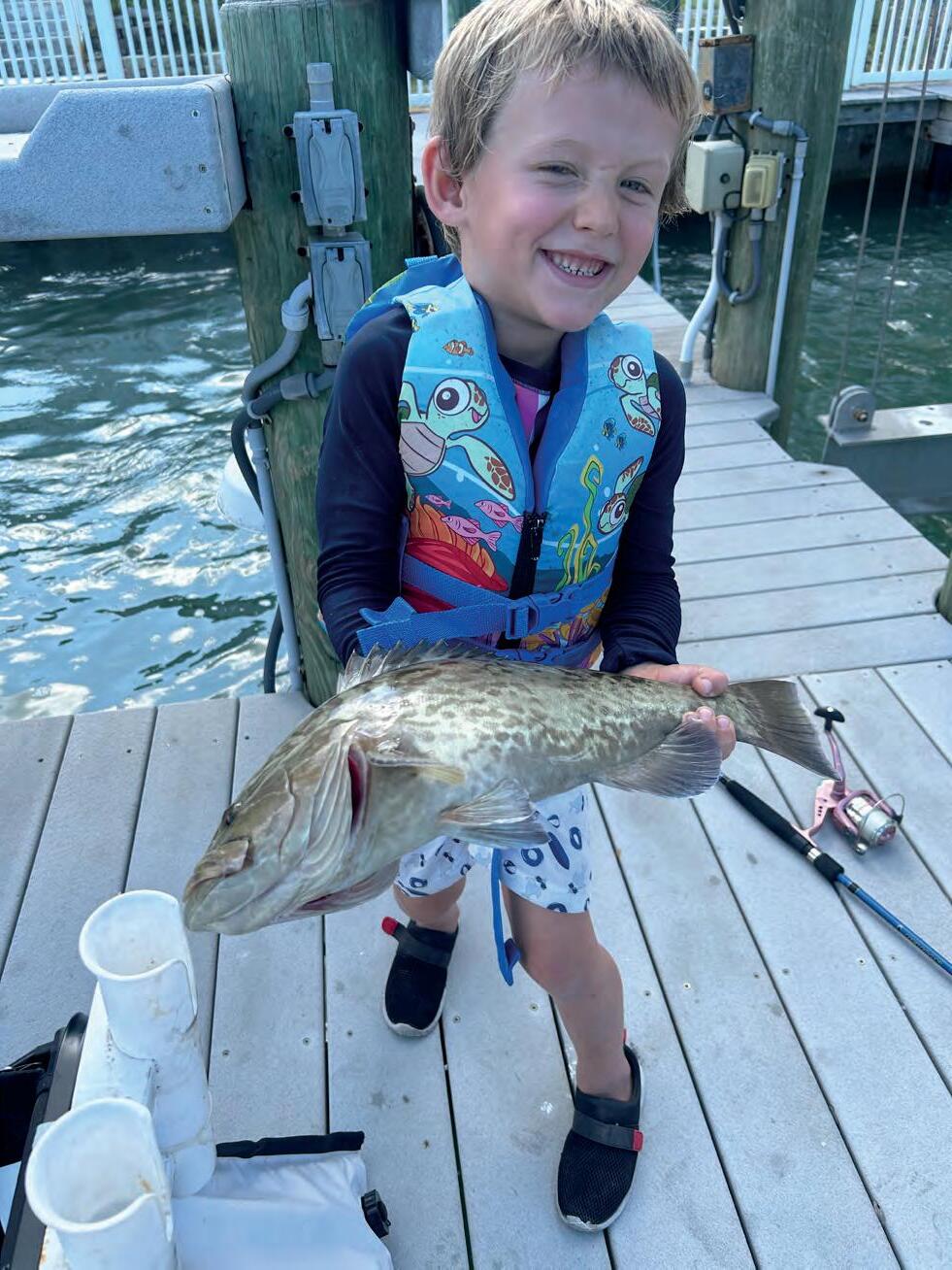
If you have a catch to brag about send your picture and caption to: chuck@coastalanglermagazine.com


By A. deGruchy
For two days every July, Florida’s coastlines, especially in the Keys, come alive with divers, snorkelers, and boaters all chasing one thing...spiny lobster. !is short window, known as Lobster Mini Season, is a chance for recreational shers to get in the water and collect lobster before o cial season begins on August 6. It is fast-paced, competitive, and incredibly rewarding if you know what you are doing.
Mini Season always falls on the last Wednesday and !ursday of July. It is a long-standing Florida tradition and one of the most exciting events of the year for local divers and visitors alike. But it is also highly regulated and o$en chaotic, so the di erence between a great haul and a frustrating day o$en comes down to preparation.
To start, you’ll need snorkeling gear, a legal lobster gauge, a dive &ag, net and tickle stick. !e best nets are the “Lobster Florida Nets” by Brook Crist. !ese nets are lightweight, easy to handle in the water, and extremely e ective when it counts. When it comes to nding lobster, structure is everything. In the Keys, ledges and rocky crevices are prime spots. Look for antennae sticking out from under the ledges. Lobsters o$en cluster together, so if you nd one, there are likely more.



!e water depths also vary anywhere from 3 feet to much deeper, from 20 feet and beyond. To catch them, approach slowly from behind, use your tickle stick to gently coax the lobster forward, but never grab from behind as they’ll retreat deeper. When the lobster begins to walk, quickly position your net to block its escape. It’s important to note that spiny lobsters swim backwards when threatened, so your net should be placed just behind them, anticipating their retreat and staying one step ahead of where they’re going. Once in the net, grab the end of the net lining so the lobster doesnt escape and measure it in the water using your gauge. Only lobsters with a carapace of at least three inches can be kept.

buddy, stay visible, and if you are not an avid diver, give yourself enough time between dives to catch your breath. Be aware of boat tra c and always use a dive &ag.
!ere are speci c regulations you must follow depending where you are, every are has limits and all lobsters must be measured while still in the water. You must also have a valid Florida saltwater shing license and a lobster permit.
Additionally, there are no-lobstering zones to be aware of; for instance, in the Florida Keys you cannot catch lobster within 300 feet of any shoreline, residential or commercial structure, public or private dock, jetty, or seawall from land during Mini Season. In some zones like the Key Largo and Islamorada Sanctuary Preservation Areas, lobstering is prohibited altogether. Always

When you return to the dock, a$er tailing the lobsters you can prep them however. Our favorite is to slowly poach them in butter and then mixing it into some homemade mac & cheese. However you cook them, there’s nothing quite like eating what you caught yourself. Florida’s Mini Season is one of the most thrilling sheries the state has to o er. With the right gear, smart planning, and respect for the rules and the reef, it’s an experience you won’t forget.
Follow deGruchy’s adventures at @bean_sport shing on Instagram and YouTube.




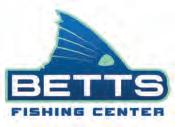

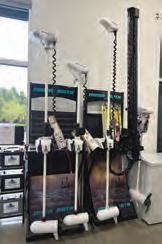


In the world of watersports, outdoors, and coastal living, staying ahead of the curve isn’t just a competitive edge—it’s a necessity. That’s where Surf Expo comes in. As the leading marketplace for watersports, coastal, and outdoor lifestyle brands, Surf Expo isn’t just another trade show—it’s the heartbeat of the industry.


Held twice a year in Orlando, Surf Expo draws thousands of retail buyers and brands from across the country—and around the world. From tackle shop owners and coastal outfitters to resort boutiques and outdoor lifestyle stores, attendees come to explore, connect, and stock their shelves with the hottest products for the season ahead.
What makes Surf Expo such an essential stop on the retail calendar? It starts with the sheer variety. From high-performance gear and accessories to apparel lines that bridge the gap between beachwear and everyday style, the show covers every angle of coastal living. Whether your customers are anglers, surfers, paddleboarders, or just enjoy hanging out on a shoreline, you’ll find products that resonate.
Surf Expo is a launchpad for innovation. It’s where new brands make their debut and where trusted names unveil their latest collections. Walk the floor, and you’ll see sustainable materials in outdoor apparel and gear—trends that shape what ends up in your store and, ultimately, in the hands of your customers.
But it’s not just about the gear. Surf Expo is a place to connect and build lasting connections. With educational sessions and hands-on demos, retailers gain real-time insights into consumer behavior, merchandising strategies, and industry evolution. The chance to hear from thought leaders and engage in conversations that shape the future of the industry is invaluable.
Even more than a business event, Surf Expo feels like a gathering of friends. There’s an unmistakable sense of community that comes from being surrounded by people who love the water, the outdoors, and the lifestyle that ties it all together. It’s an event where passion meets professionalism, and where inspiration flows.
For businesses grounded in coastal life—whether you run a marina shop, a beachfront boutique, or an outdoor outfitter—Surf Expo offers the perfect blend of product discovery, industry insight, and relationship building. It’s a one-stop destination to get inspired, get stocked, and get ahead.
Attend Surf Expo, and experience firsthand where the business of coastal lifestyle meets the adventure of the outdoors. Because when it comes to outfitting your customers for life on or near the water, this is where it all begins.
Visit surfexpo.com to see a list of exhibitors and events.
Qualified Retail Buyers - Register for Free Before August 21, 2025.





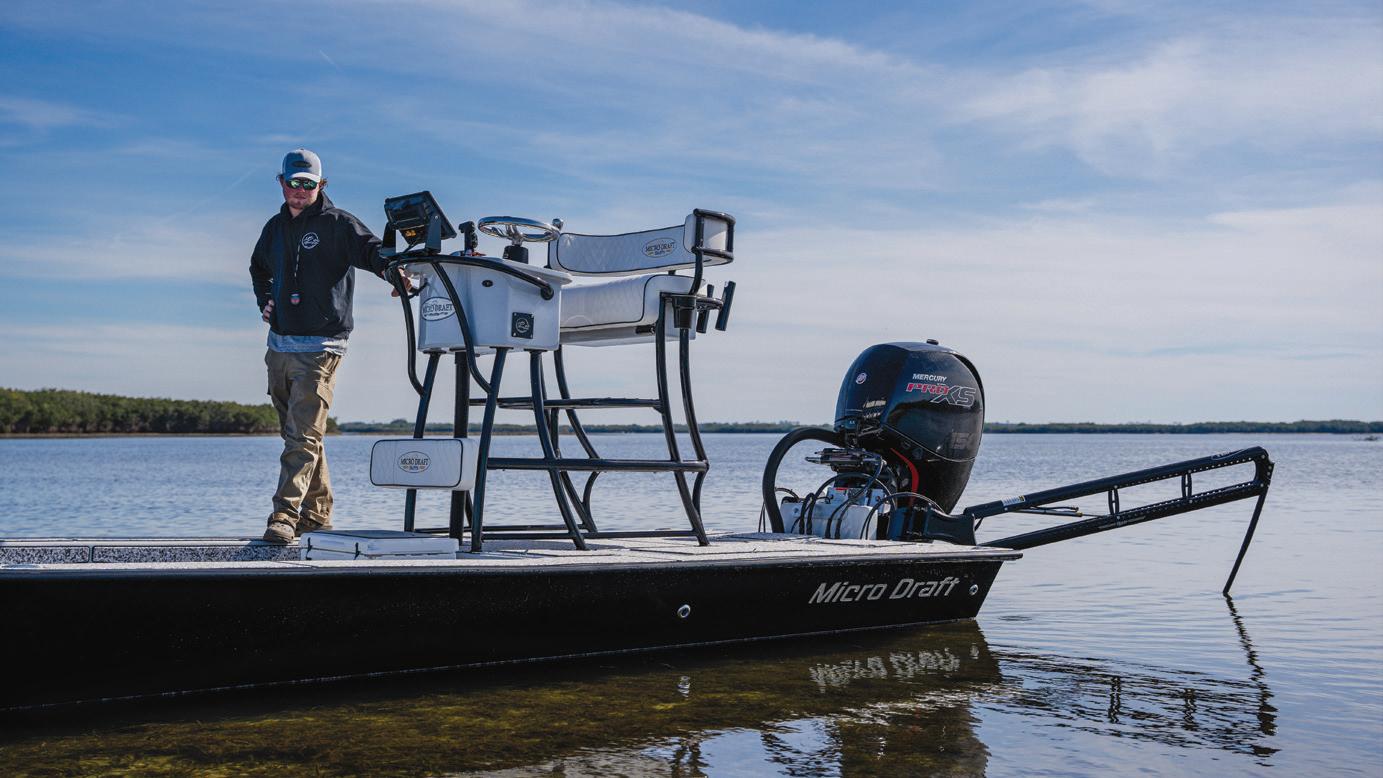



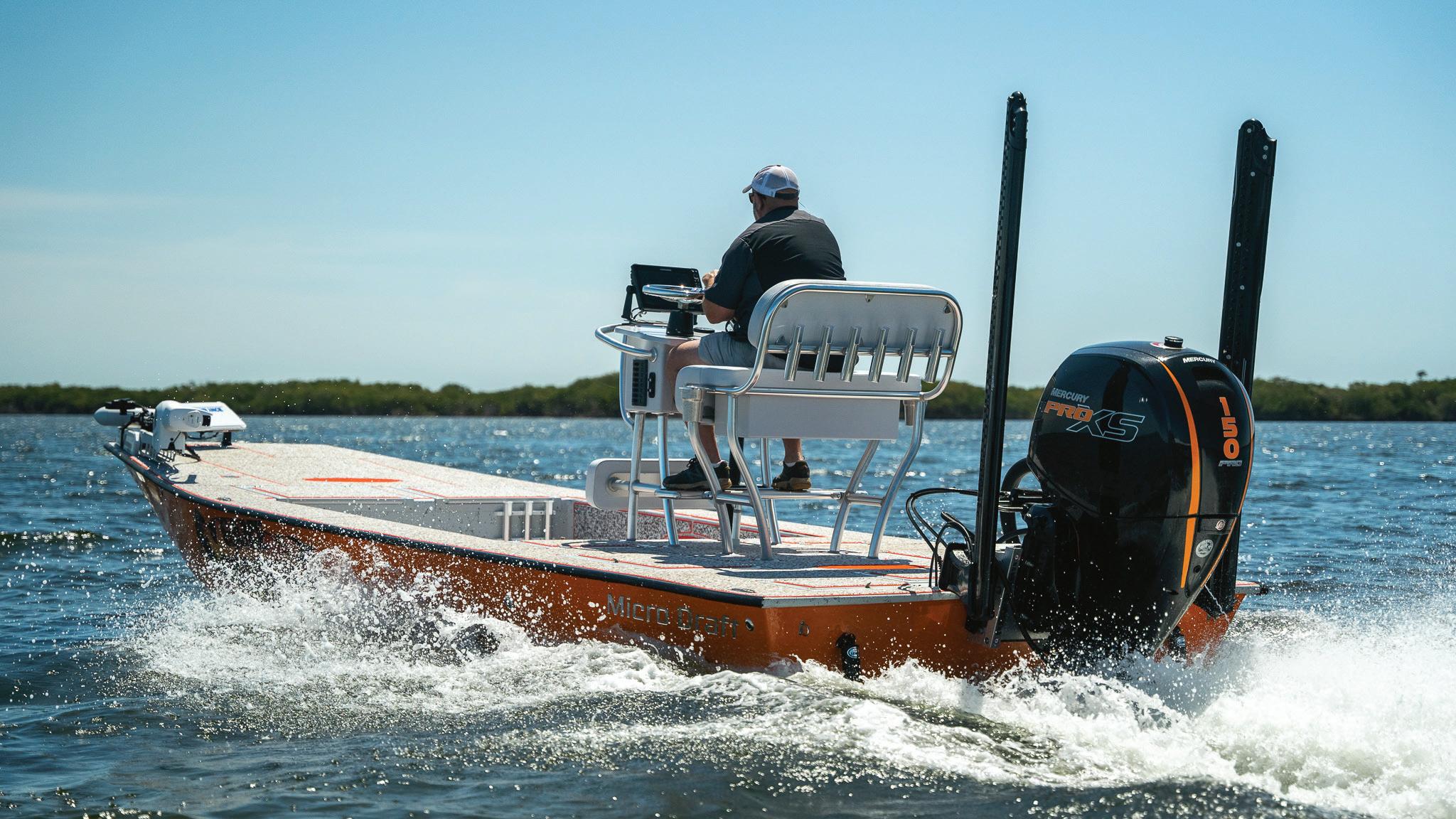
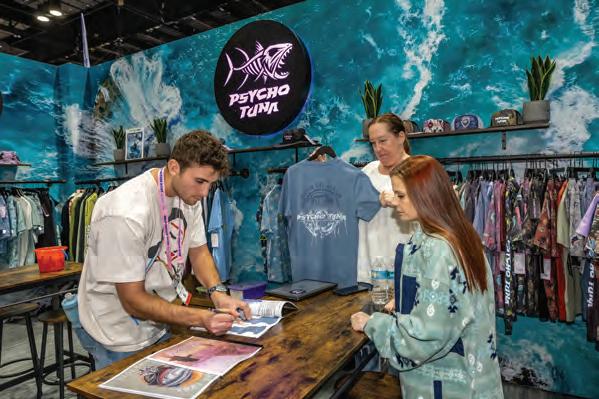
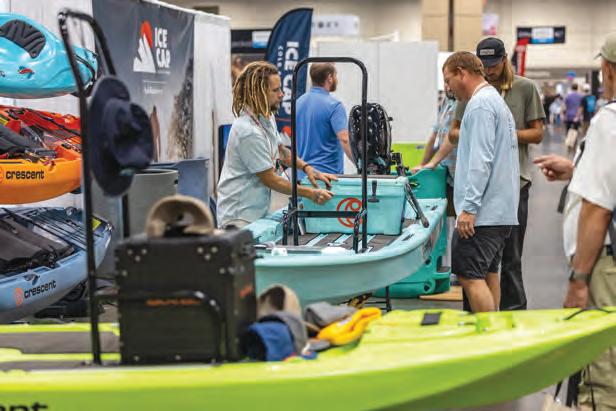
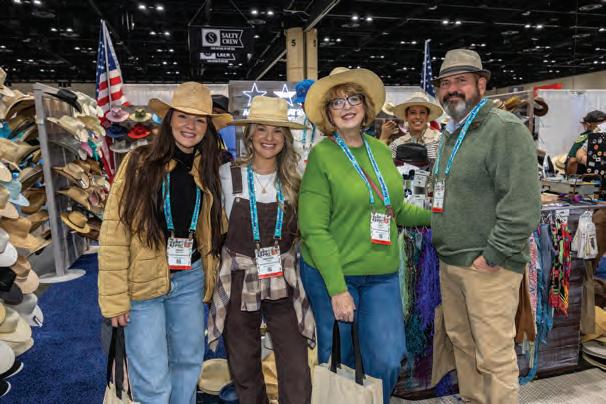
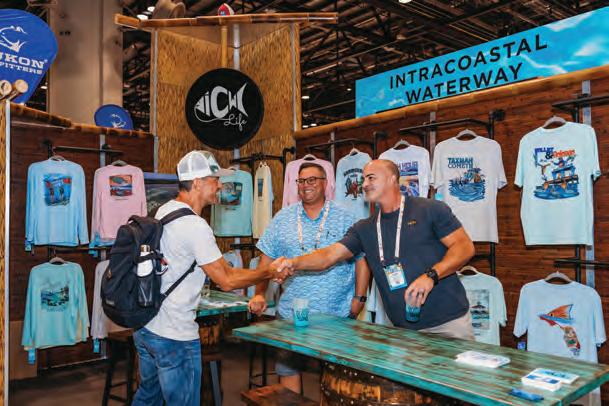

By atch Maguire
For retailers in the outdoor industry, showing up at ICAST each year is a pilgrimage that enables every town and every shery in many countries to be equipped to catch more sh and pursue their outdoor experience better. New innovations and inventions are the hallmark of this massive four day event, and while we all recognize the rapid rate of change occurring in our lives through advancements in technology and entrepreneurial excellence, witnessing the evolution of the art of catching sh over the last 25 years has, for this writer, been nothing short of mind-boggling. It’s as if the sh don’t stand a chance. Today’s electronics and gear are so advanced that anglers can almost negate the luck and even the skill factor that played such an important role in yesterday’s angling success. !at’s not to say acquiring the skills and
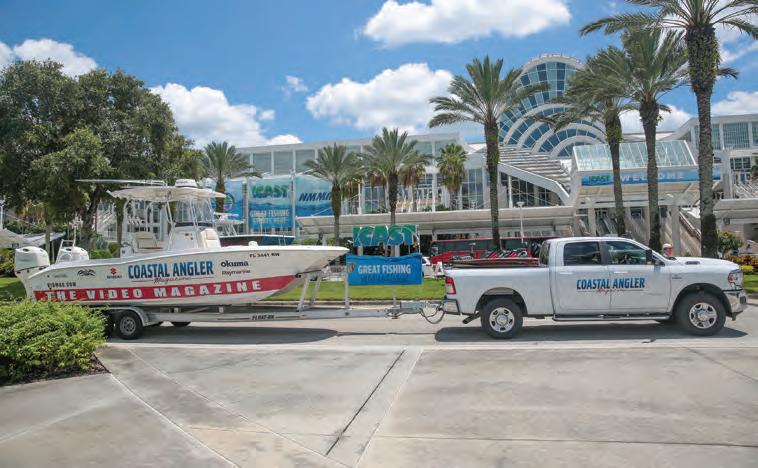
ICAST 2025, the world’s largest sport shing tradeshow, will be held July 15-18 at the Orange County Convention Center in Orlando, Fla. ICAST is a trade-based show and is not open to the general public. “The show is the cornerstone of the sport shing industry, bringing together manufacturers, retailers, consumers, conservationists, state agencies and other sport shing stakeholders. In its 68th year, ICAST continues to be the place where the most valuable business relationships are born, strengthened and celebrated.” www.icast shing.org
expertise to utilize today’s innovative equipment doesn’t require e ort, dedication, and focus as the pursuit of excellence in shing did a generation ago; it’s only to say that it’s di erent today and to suggest that it will continue to evolve.
I recently shed with an accomplished young guide for snook in the Sebastian Inlet (on the east coast of central Florida) and his electronics and forward sonar were so exceptionally dialed in that we literally targeted the largest snook with the precisely duplicated bait and in a three hour trip we caught nine world class snook that, any one of




which, 20 years ago would have been considered a “ sh of a lifetime.” Braid line, superior rods, smooth reels. All these advancements made their introductions at ICAST.
!is year, Coastal Angler and its’ vast network of Franchisee Co-publishers will be scouring the booths to bring you the latest and greatest in new innovations to our beloved sport.
For an up to date look at what we’re seeing at ICAST 2025, check out all of our ICAST coverage at CoastalAnglerMag.com and VidMag.com.
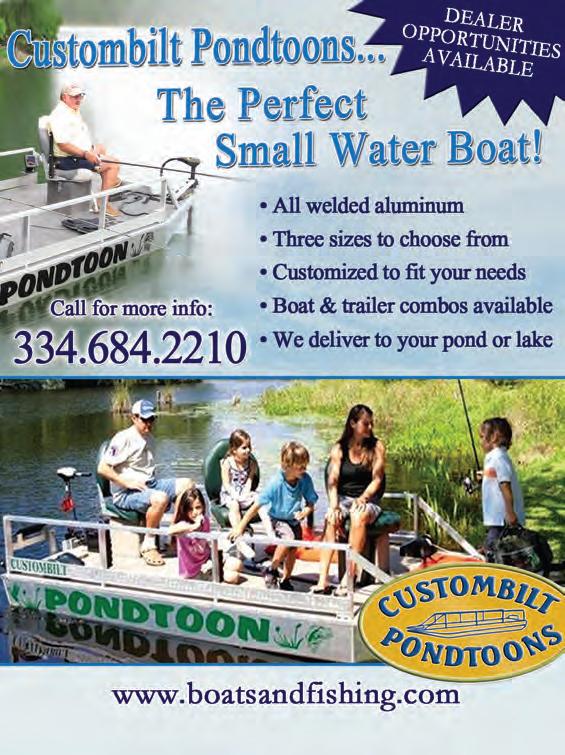
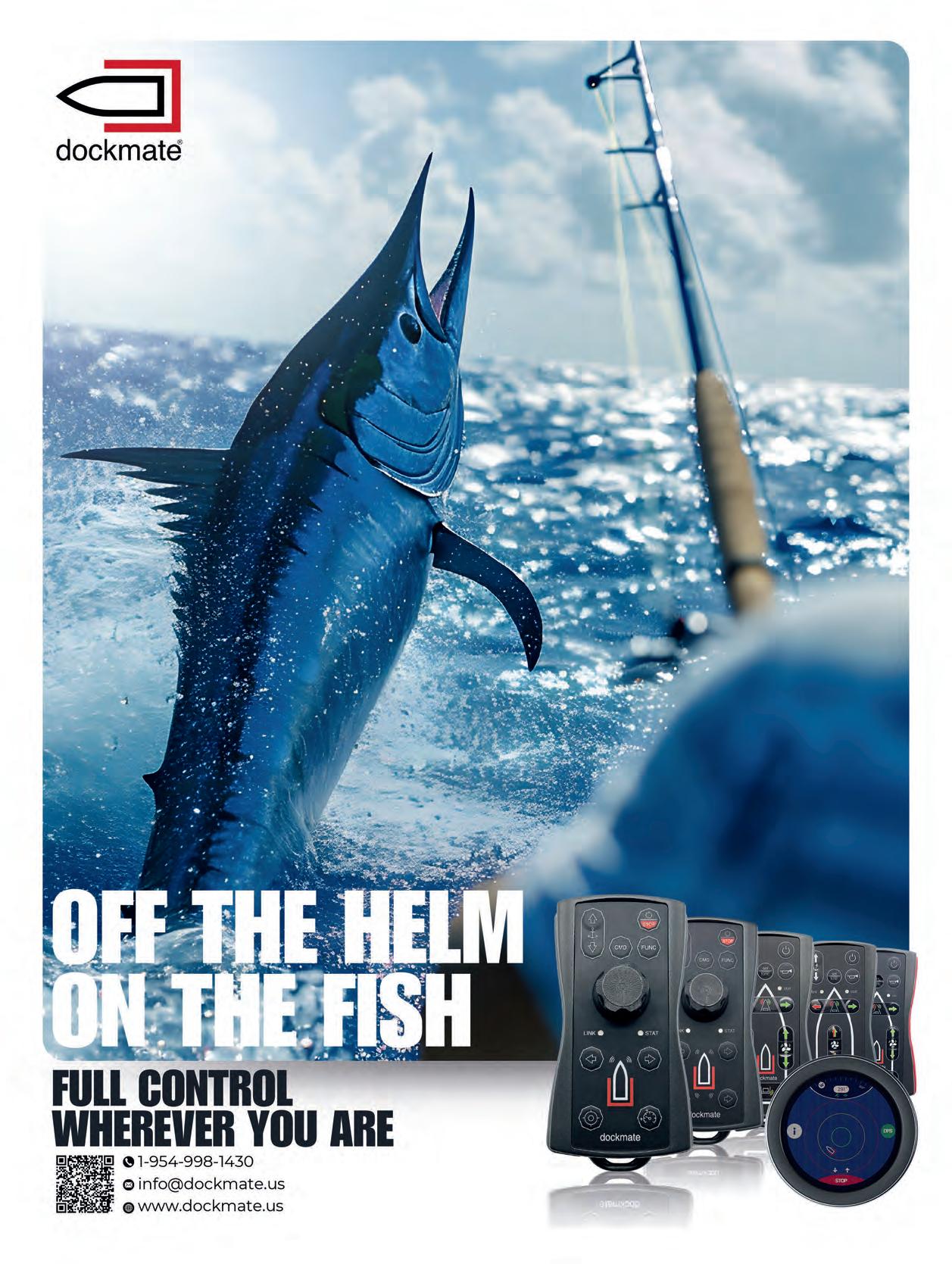


The Coastal Conservation Association (CCA) Florida STAR competition presented by Yamaha is thrilled to announce the newest division to the summer-long shing event, the Drum Spots “Lots-a-Spots” red sh division presented by Gulf States Automation. !e new division adds a unique twist to the popular catchphoto-release competition by awarding anglers for catching red sh with the highest number of spots.
Unlike any other division, “Lots-A-Spots” celebrates one of the most distinctive and eyecatching features of red sh, the iconic black spots. Participants in this division will submit photos of his or her catch, and the sh with the most combined spots on both sides will be awarded prizes.
“We’re thrilled to introduce the Drum Spots ‘Lots-A-Spots’ division presented by Gulf States Automation to the 2025 CCA Florida STAR competition,” STAR Director Capt. Leiza Fitzgerald said. “ !is exciting, new division adds another level of fun and strategy for our anglers, rewarding those who reel in the red sh with
the most spots. It’s a great way to celebrate the unique beauty of these sh while encouraging participation in a conservation-minded, catchphoto-release shing competition.”
!e “Lots-A-Spots” division continues STAR’s mission to highlight Florida’s diverse marine resources while encouraging sustainable practices through catch-photo-release participation. Anglers who participate in the division must submit photos of the le$ and right side of the red sh. !e winning sh will be the red sh with the most spots counted and combined on both sides of the sh’s body.
!e 2025 CCA Florida STAR competition presented by Yamaha invites anglers and nonanglers alike to participate for their chance to win prizes valued at almost $500,000, including boats from Carolina Ski , Sea Born, Spyder and Micro Dra$ Ski , Yamaha motors, scholarships and more.
Registration is open throughout the competition. To register for STAR 2025 or for more information on divisions, prizes and more, visit cca star.com.

• 1st Place: SUP Customs Hybrid Skiff with trolling motor bow mount, Minn Kota Riptide Power Drive 12V Trolling Motor & transom bracket with 6HP Yamaha, Power Pole Micro, and a great accessories package plus a Ross Currington Art replica of winning redfish
• 2nd Place: Abyss Battery 36V Battery with charger, Ross Currington Art replica of winning fish, Bull Bay Rod/ Florida Fishing Products Reel and Bahio Sunglasses
• 3rd Place: Power Pole 8ft Sportsman, King Sailfish Mount replica of winning fish, Bahio Sunglasses and Relentless Knife
• 4th Place: original art piece by Ashton Howard, RCI optics and NLBN Package
• 5th Place: Bay Flats Lodge fishing trip for two plus food and lodging for two nights, RCI Sunglasses andToadfish Package
• 6th Place: Humminbird Helix 7, RCI Sunglasses, Zman Baits, Toadfish Package and NLBN Package



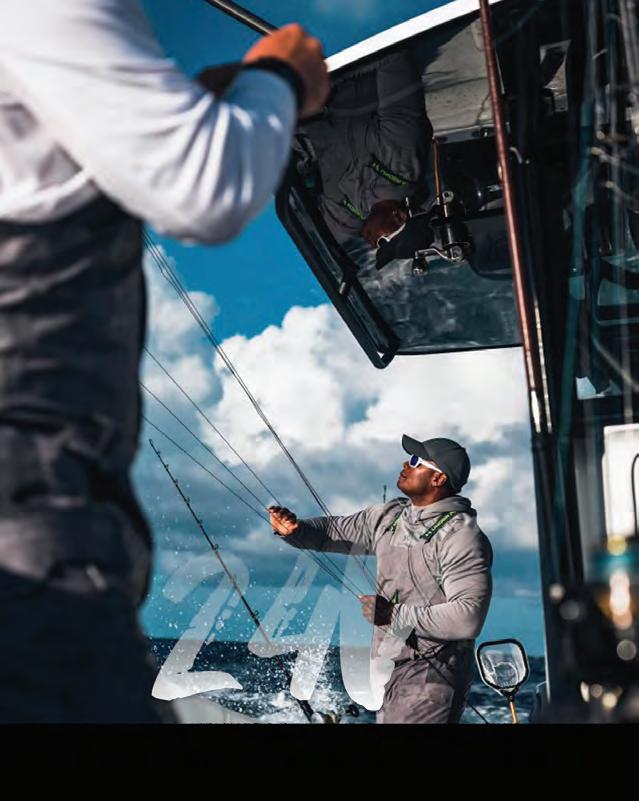







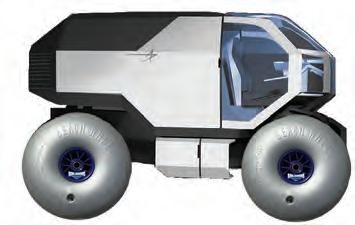





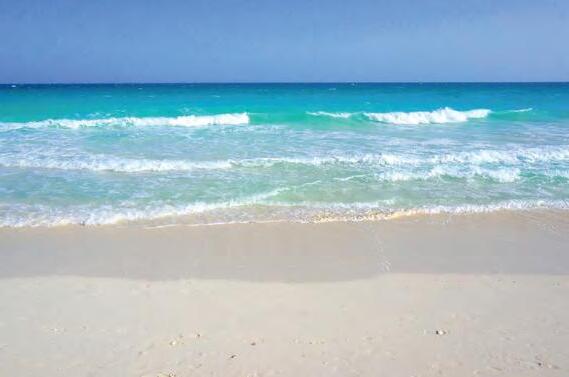



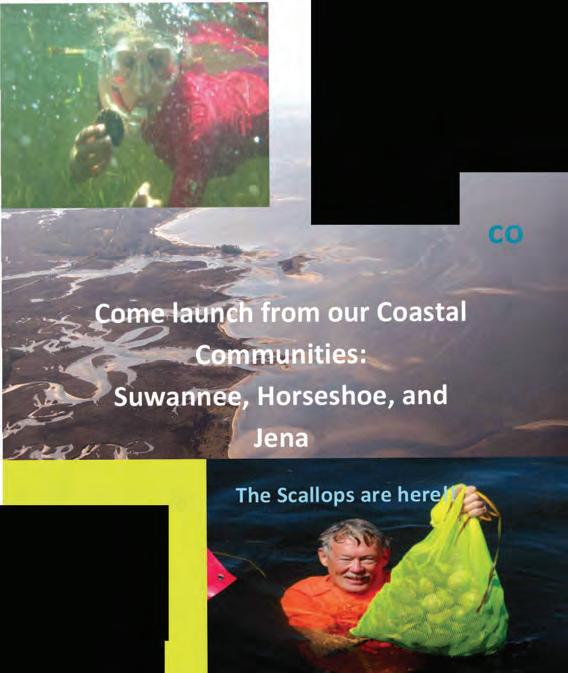
The International Game Fish Association’s (IGFA) world record database is a great source for folks who like to see some of the great sh anglers are catching around the world. Here are a handful of catches recently approved for the record books. For more world records, visit the IGFA website at igfa.org.
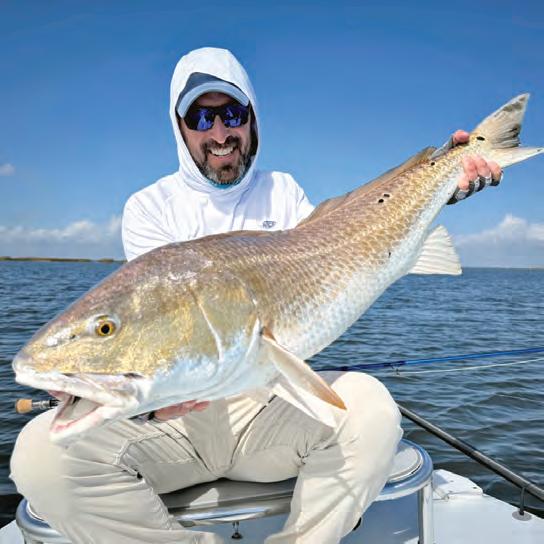


On November 11, 2024, Earl Gill IV was shing aboard the Excel captained by Justin Fleck when he landed this massive 443-pound yellow n tuna. With this sh, Earl has set the IGFA All-Tackle World Record as well as the IGFA Men’s 60-kg (130 lb.) Line Class World Record for the species, surpassing the previous records by 16 pounds! !e Excel was shing the Lower Banks o Mexico when this record yellow n struck Earl’s cut bait. A$er an intense 1 hour and 45-minute ght, the crew was able to ga the tuna and bring it aboard.
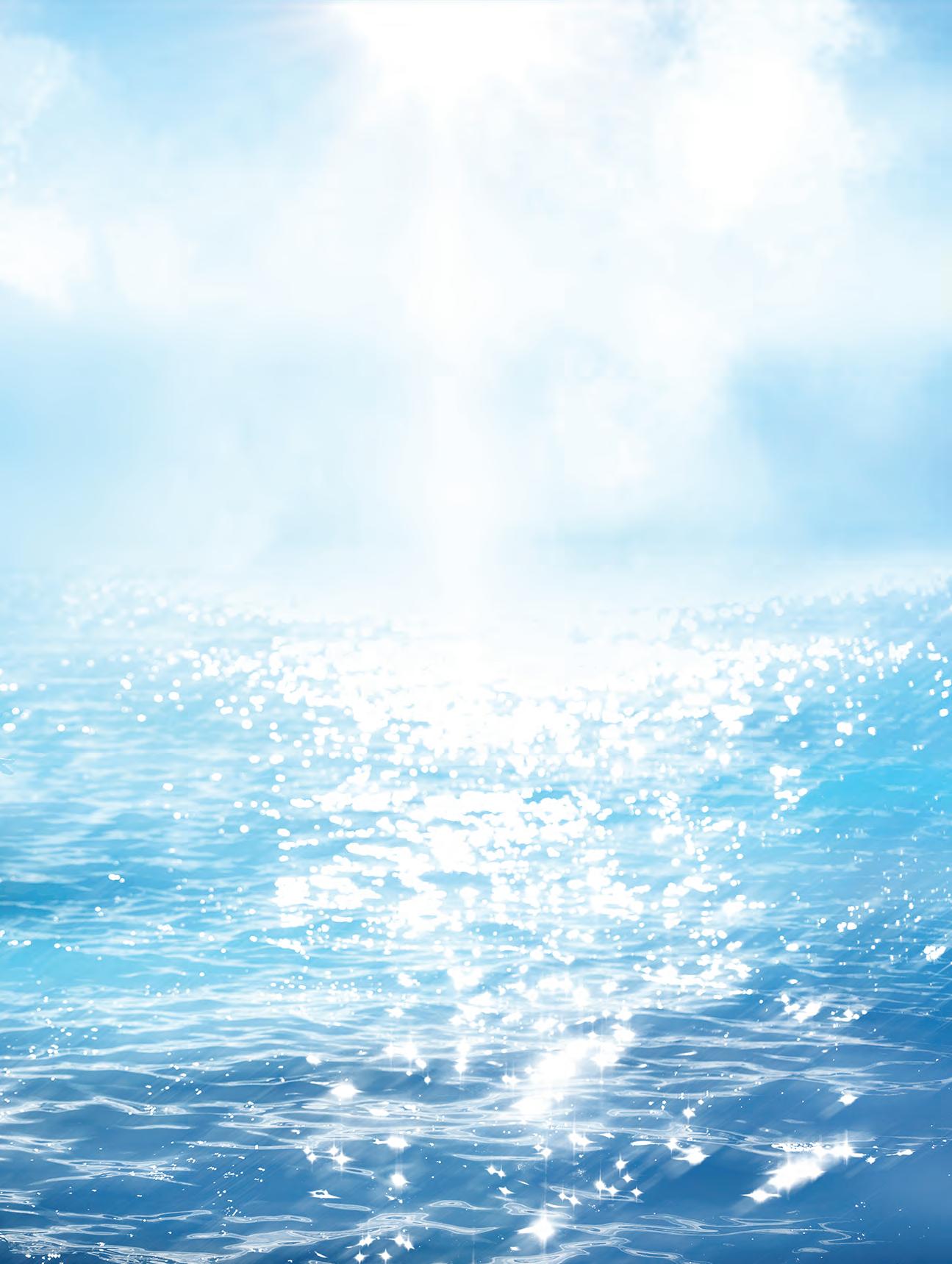
On February 9, 2025, Graig L. Hale was shing the backwaters near Port Sulphur, Louisiana, when he landed a 37.4-inch (95 cm) red drum—tying the IGFA All-Tackle Length Fly World Record for the species. !e record red sh ate a crab &y while Graig was shing with Capt. Scott MacCalla, making for an unforgettable day on the water. A$er boating the sh, Graig was able to record the length on his O cial IGFA Measuring Device before releasing the sh safely.

Pamela Moss was shing on Lake Lanier in Georgia on February 10, 2025, when she landed this 9-pound, 5-ounce landlocked striped bass. With this sh, Pam has set the IGFA Women’s 4-kg (8 lb.) Tippet Class World Record for the species. She was shing with guide Dillon Lancaster when she landed this record sh. She released the sh safely a$er recording the weight on her certi ed scale.
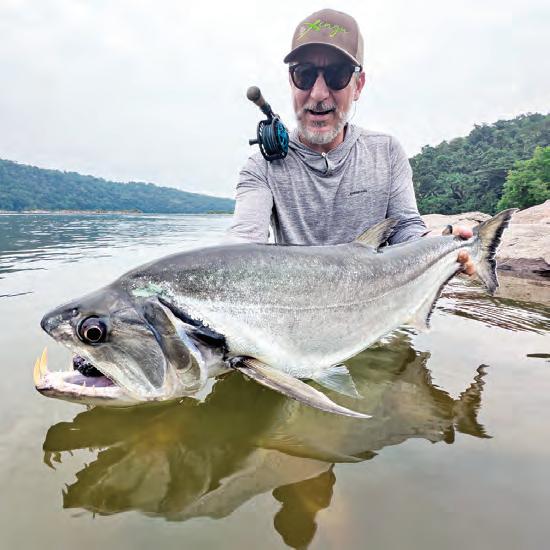
On November 22, 2024, IGFA Representative and multiple World Record holder, Rodrigo Salles, was shing the Rio Xingu in Brazil when he landed this 33.07-inch (84 cm) payara. With this sh, Rodrigo has set the IGFA All-Tackle Length Fly World Record for the species. Rodrigo landed the toothy payara on a black streamer &y. He was then able to record the length on his O cial IGFA Measuring Device before releasing the sh safely.

When it’s time to get on the water, your gear should be as ready as you are. Introducing the new and completely redesigned - Plano® StowAway®. Thick, pre-cut dividers make for easy box setup. More divider slots allow you to store more lures. RustrictorTM technology blocks rust and corrosion to help keep your favorite tackle rust-free. A single latch with a labeling area helps to quickly identify and access tackle on the fy. The best part? We’ve kept your favorite Plano StowAway at the same affordable price. Don’t just be kind of ready - be Plano ready.


July and August will be the hottest months of the year. !e wahoo and yellow nn will be everywhere and nowhere they should be. For example, you could go up and down the edge of the break and not nd a wahoo or a yellow n anywhere, but the guy slow trolling a menhaden for king mackerel 10 miles o# the beach catches a 100-pound wahoo or the guy 30 miles o# the beach light lining a pin sh while bottom shing catches a 50-pound yellow n. None of it makes any sense this time of the year, except one thing... nd the bait, nd the sh. !e same thing applies to bottom shing. !is is the time of year to search for big stacks of bee liners, cigar minnows, and sardines. Keep an eye on the recorder when you’re running to wherever you’re going, and if you see a big stack of bait on the surface, take a minute to check it out. If that stack of bait happens to be near pretty bottom, there’s a good chance it’s a good place to sh. !is is the time of year when it is especially productive to jig live cigars and sardines and put them back out.
whatever you want to, but stay focused on the bottom. Always keep a pitch rod handy with a live cigar, mina or sardine on a small circle hook and $ourocarbon. You never know when a sail sh will swim by the boat. When it does happen, remain calm do not go screaming and running around the deck because, chances are, you will spook the sh and not get another shot presenting a bait to it. If you’re very quiet, chances are a sail sh will come right back to the boat and you’ll get a shot at hand-feeding him a cig or sardine. And just like that...you’re hooked up!
It’s always a good idea to keep one person dedicated to the Sabiki. When you have big marks on the bottom or see schools of bait on the surface, just know that every one of those minnows caught on the Sabiki turns into a bite, either on the light line or on the bottom.

Of course, I have to say all of this to promote bottom shing because I do not believe in trolling. For all the sh you’re trying to catch trolling, you can hook on the light line while bottom shing. Not only that, sh are a lot more fun to catch on light tackle from an anchored-up boat rather than with trolling gear. Do I like to catch kings and dolphin on the light line? Yes. Are they my favorite sh to eat? No! Yes, they are edible, but I prefer to eat sh from the bottom. So, keep a light line out to catch and release
Needless to say, a live cig or sardine has a life expectancy on my Decoy Jig of under 10 seconds and everything eats one on the light line.
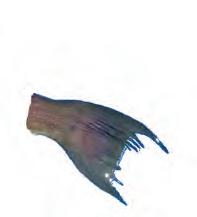
So, go to all your normal places in July and August that traditionally hold the bait, and you will most likely nd the sh. Live bait is always the best, but don’t ever leave the hill without a box or two of frozen cigar minnows. More sh have been caught on frozen cigs and sardines, than all the other baits combined. It’s never a bad idea to take live pin sh from the marina as well; the beauty live pin sh is that not everybody down there can put it in their mouth which eliminates a bunch of trash bites.
Yes, you will have to deal with catching and releasing all the “endangered” American red snappers and gag grouper, but that’s just what you’re gonna have to do until we can get this straightened out. Learn how to handle these sh properly for a successful release and come home with some good dinners.
Check out more from Tim Barefoot at barefootcatsandtackle.com.



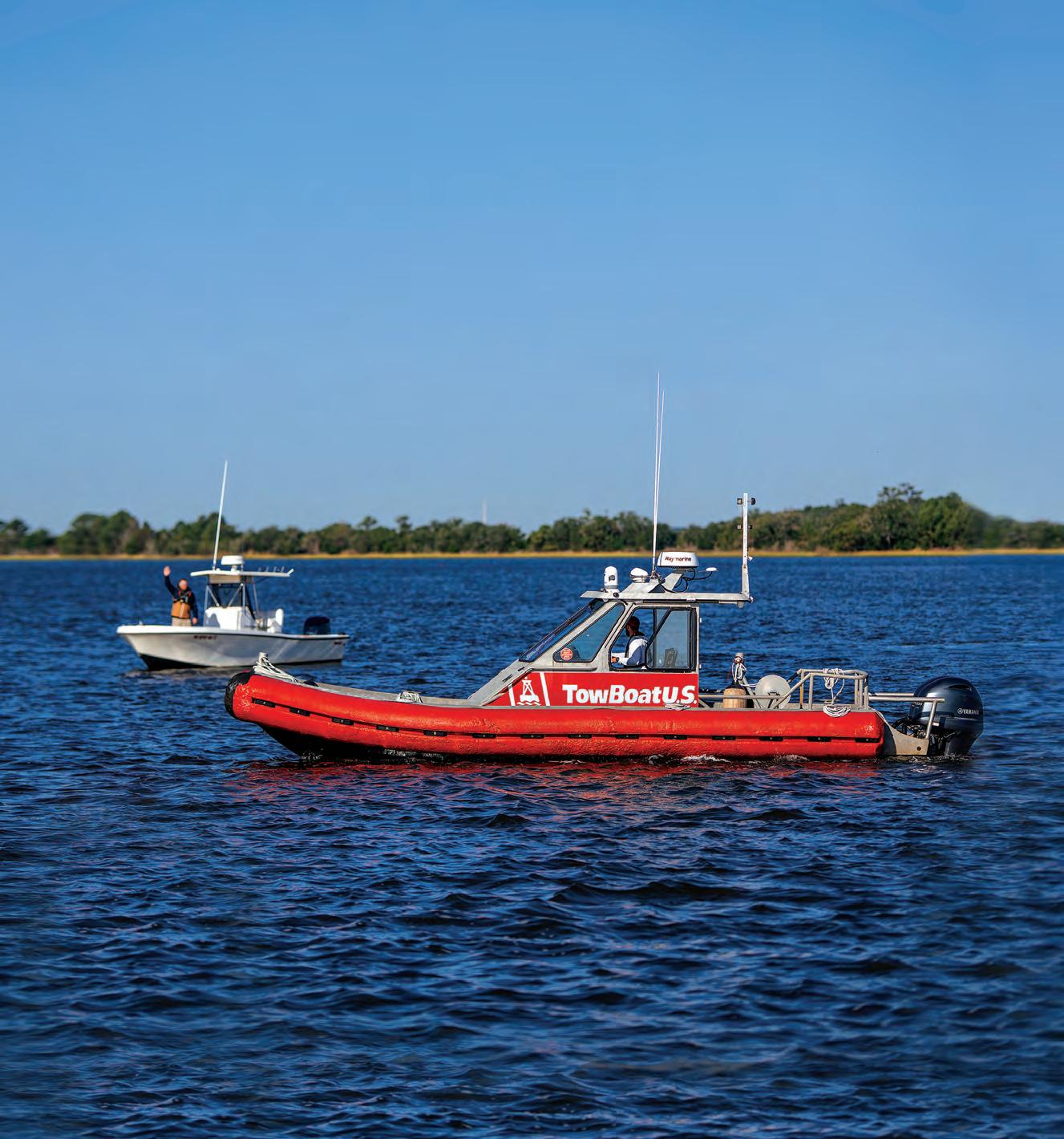
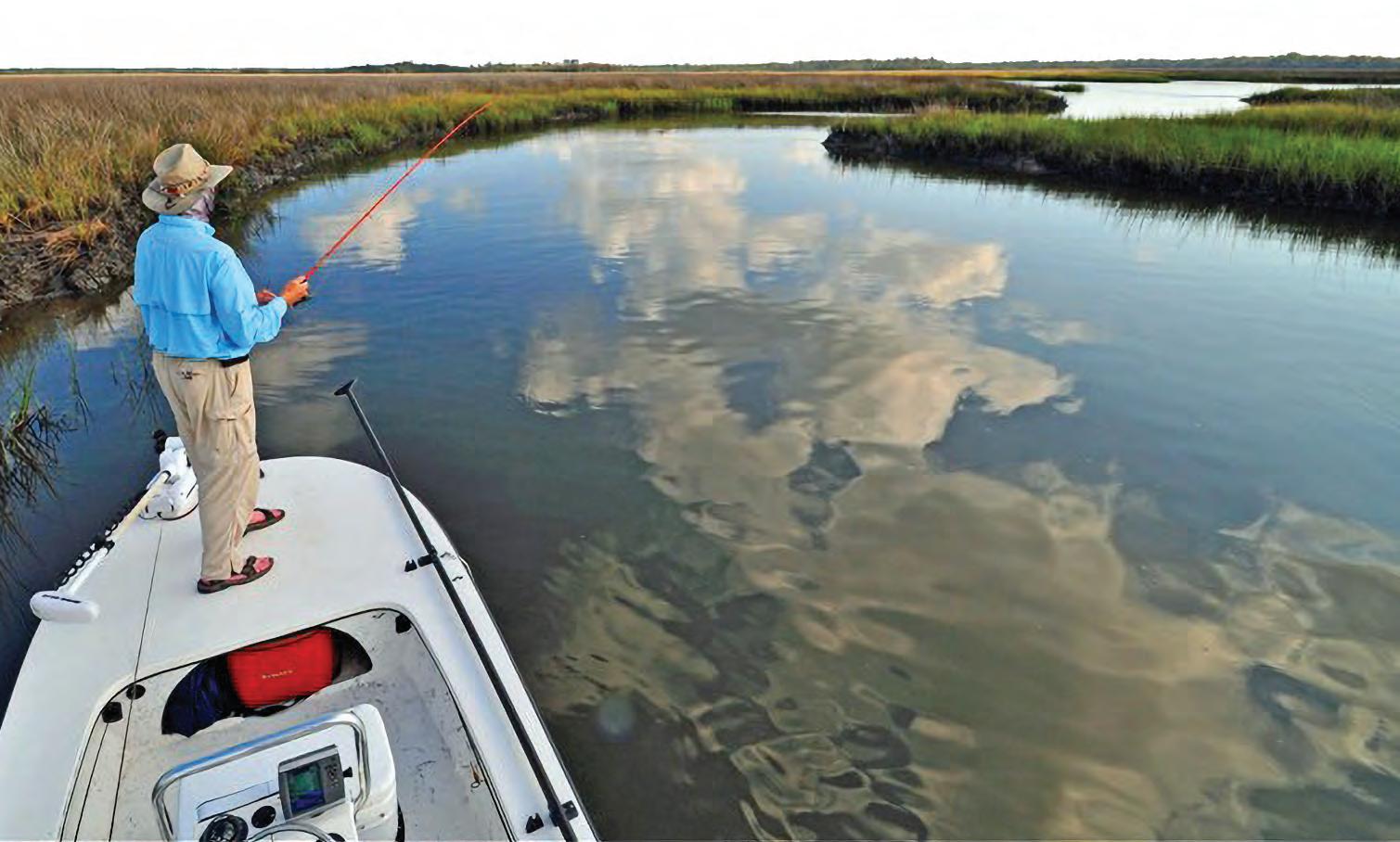
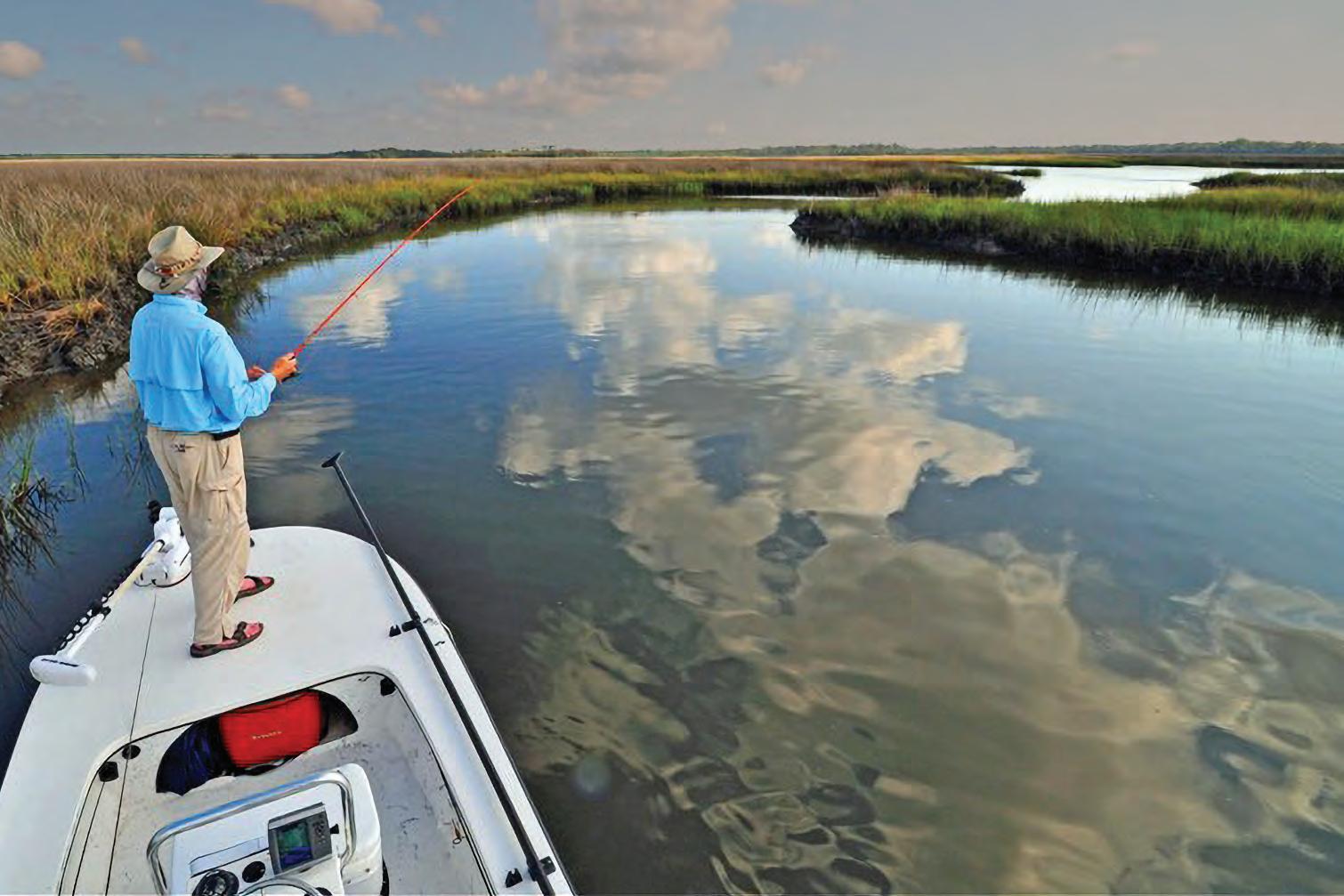









In general, the trend in boating these days is bigger is better. Right? Engine horsepower is getting higher and higher, and boats are being built able to accommodate two, four, even six engines. But what about the other end of the spectrum—anglers and cruisers that are looking for the ultimate in portable propulsion? Whether you are looking for a boost for your kayak or a reliable motor for your in$atable shing boat or tender, the perfect engine should be lightweight, easy to take on and o#, easy to use and provide the range and speed for almost any conditions. It should be selfcontained, so you don’t have to deal with lugging around a fuel tank, or even have to purchase and safely store gasoline on your boat.
Electric propulsion is the way to go, but no one has really gotten the

converters, the eLite can be fully charged in around four hours. For added capability and convenience, the engine includes a USB-C output that allows users to charge and power other electrical devices. At just under three-feet in length and weighing 14.7-pounds including the built-in battery, the eLite stores easily and the one-click quick-release bracket allows for installation and removal in a matter of seconds. For exceptional portability, the tiller handle converts to a perfectly balanced carry handle. With multiple trim and tilt angles, adjustable steering resistance and sha length, and a shallow-water mode, the eLite is completely customizable. Its Smart Battery Monitoring System e%ciently optimizes performance, carefully regulating battery level, temperature, and remaining state-of-charge all displayed on an ultra-simple interface, leading to extended range, a more energy-e%cient operation and longer battery life. Built to last, it is IP67 waterproof, and is constructed of aviationgrade aluminum alloy for lighter weight and greater durability. In addition, the anti-ground auto kick-up feature protects the motor from accidental damage. Available for under $1,000, it is also the most a#ordable electric outboard in its class.
!ere’s no time like today to upgrade to the electric outboard of the future. !e ePropulsion eLite is in stock and ready to take you quietly and sustainably to your next adventure.






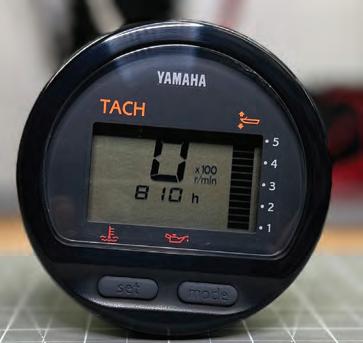



TYLER WOOLCOTT

Most of the time the saying is true, bigger bait equals a bigger sh! Although elephants eat peanuts, a big bait pro le is something sh can’t resist no matter if you are shing the open ocean or the Great Lakes. I have spent a lot of time over the last few years throwing baits bigger than my old “comfort zone” sizes for bass and it is pretty special what gets curious to come look or bite them.
!ere are many di#erent types of swimbaits out on the market, but I’ll break them down into two for this article to keep it simple. You have the hard, gliding-style treble hook swimbaits, or you have so body swimbaits that is more of a steady slow reel and most of the time more weedless. !ey both have an awesome time and place to get thrown and will both attract some very big sh.
Depending on where you are in the country and the size of the forage in your lake, a normal meal for a bass is usually much bigger than you think. A 6- to 8-inch bluegill is something a two or three pound bass would have no issues at all with swallowing and eating it whole. A 10+ pounder, on the other hand, could eat bait sh such as gizzard shad up to 14 inches, which I have personally seen. Trying to exactly duplicate the larger bait sh that are in your lake in a natural presentation is the absolute best way to draw attention from sh to your arti cial lure.
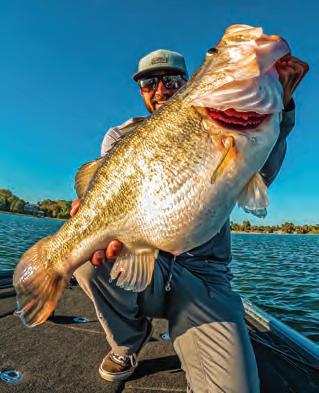
Most of the time when I am throwing a gliding-style hard swimbait, my rst choice is always going to be a shad imitation. A majority of the
places I sh are full of shad and this seems to be a favorite food source for bass when available to them. Another major large food source for big bass that a lot of people forget about are crappie. I have personally witnessed some absolute giant bass in multiple lakes that feed primarily on crappie. When throwing so swimbaits my go-to imitation is typically a bluegill. Usually when I’m throwing a so swimbait I’m wanting to either creep it through grass or along the bottom, which calls for a more weedless rig. Both places bluegill typically live and the bass that feed on them aren’t usually too far away. !ere are many di#erent brands of swimbaits out there, hard and so . When rst starting out I would stick to some of the a#ordable baits that have good reviews by users and are proven to work until you build up your con dence, then start working your way up to bigger and more customized things.
When throwing bigger lures like swimbaits you typically want bigger equipment to throw them. 13 Fishing makes an awesome, very a#ordable 8-foot rod in their Defy series that can handle most swimbaits I throw. Pair this up with a 300 sized reel like the 13 Fishing Concept A3 and some 20-25 lb. Su x Advanced Fluorocarbon and you are ready to go battle with some big sh!
It’s hard to t all the info needed to explain this technique in this article, but I hope it sparks your interest to get out there and throw a big bait. !e best way to learn is to get on the water and give it a try for yourself! I tried it once and now it is one of the coolest and most fun ways I target big bass all year long.
Don’t be afraid to reach out via my website or social media platforms with any questions you may have!
Good luck out there and tight lines!
Tyler Woolcott is a professional tournament angler and guide. Check out his website at www.tylerwoolcott shing.com.


Weighing just 30 pounds, the portable and versatile DF 2.5HP outboard motor is the lightest Suzuki 4-stroke motor ever built. This smooth and quiet engine is water-cooled for increased dependability, features a digital CDI, and its anti corrosion system ensures the aluminum propeller stays durable in marine conditions. Steering and throttle tension and control are easily adjustable. Simple steering action for maneuvering in tight quarters. Easy-to-grip carrying handle conveniently tilts the motor up when needed. Meets the rigorous EPA 2010 and CARB 3-Star Ultra-Low emissions standards.

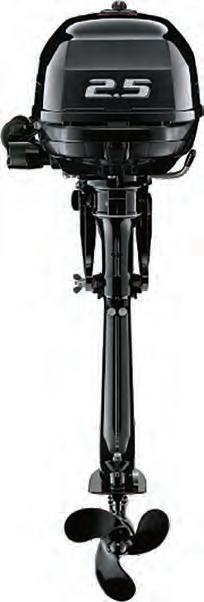

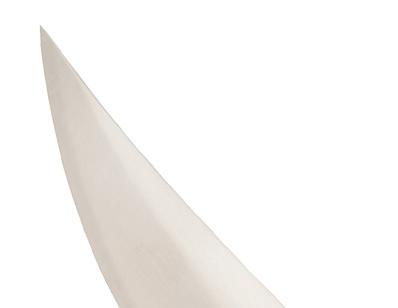
Three knives. ONE amazing price! Originally $249. Limited time special offer ONLY $69!

When you use your INSIDER OFFER CODE


— D., Houston, Texas TAKE 72% OFF INSTANTLY!
Looking for a knife that’s a cut above? We can do you two better. The Triple Play Knife Collection gives you three different styles of hunting blades for one unbelievably amazing price of just $69. Because serious hunters know that sometimes one knife isn’t enough, and so do serious collectors. All three blades in the Triple Play Knife Collection are made with genuine 440A stainless steel and measure an impressive 52-58 on the Rockwell scale for hardness. There’s the reliable lockback blade, designed to open up and never let you down. The two-blade trapper knife, engineered for those who trap small game, and a solid, simple, fine fixed blade measuring 9" in overall length, and the antler-textured handles on every knife complete the expert hunter look.


With all three blades along with a decorative display box priced at just $69, this is some big collectible prey worth hunting down. This deal truly is a cut above.

Satisfaction Guaranteed or Your Money Back. Try out the Triple Play Knife Collection for 30 days. If it doesn't make the cut, send it back for a full refund of the item price. Limited Reserves. We only have 850 available for this ad only at this incredible price. Call today!
What customers are saying about Stauer knives...
“First off, the shipping was fast and the quality is beyond what I paid for the knife. Overall I am a satisfied customer!”
Triple Play Knife Collection $249* Offer Code Price Only $69 + S&P Save $180
Your Insider Offer Code: TPK238-01
You must use the insider offer code to get our special price.

14091 Southcross Drive W., Dept. TPK238-01
Burnsville, Minnesota 55337 www.stauer.com
*Discount is only for customers who use the offer code versus the listed original Stauer.com price.
Rating of A+ California residents, please call 1-800-333-2045 regarding Proposition 65 regulations before purchasing this product.

• 3-piece set: 9" overall fixed knife with 5" blade; 4 ¹⁄8" trapper knife with two 3 ³⁄8" blades; 4" overall lockback knife with 3" blade • Stainless steel blades with antler patterned resin handle • Comes in decorative display box
Stauer… Afford the Extraordinary .®
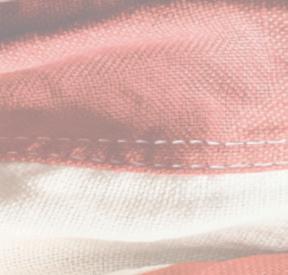















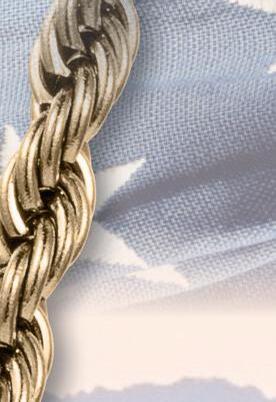




Troughout history, the eagle and the anchor have stood as enduring symbols of power and resolve. Te eagle, with its mighty wings and piercing gaze, has long been a representation of freedom and bravery, soaring high above, ever watchful and unyielding. Te anchor, frmly rooted, embodies stability and steadfastness, grounding even the fercest storms. Together, these two symbols have come to represent those who serve with honor - those who rise to meet any challenge, yet remain rooted in integrity.








Inspired by this profound symbolism, the Wings of Honor pendant brings together the soaring spirit of the eagle and the enduring strength of the anchor in one stunning design. Crafed from premium stainless steel and fnished with a luxurious 18k gold coating, this pendant is not just a piece of jewelry - it’s a tribute to the values that have defned generations of heroes.










Te Wings of Honor pendant is a statement piece that speaks to the legacy of all who wear it. Whether as a gif for yourself or for someone whose story is woven with honor and valor, this pendant carries a deep sense of pride.




And now, this remarkable symbol of strength can be yours for an incredible price - just $39 plus S&H. By using the special code CA5WHP, you can secure this timeless piece, saving you more than you’d expect for such crafsmanship.
A lasting reminder of bravery and commitment, the Wings of Honor pendant connects the wearer to the rich heritage of those who stand for both freedom and stability. It is more than an accessory - it’s a refection of the values we hold close, ready to be passed from one generation to the next. Claim yours today, and wear your story with pride.










Wings of Honor Gold & Steel Pendant - $149 $39 - Save $110








$39 Special Offer


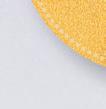







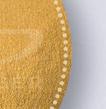








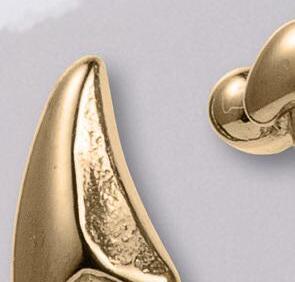



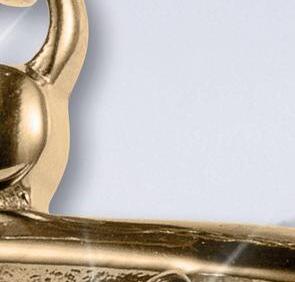
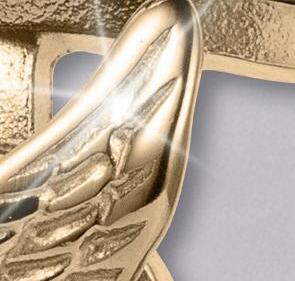




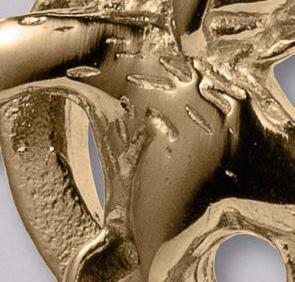


* Exclusive Ofer Price Using Discount Code Pendant & 24” 18k Gold Plated Rope Chain - $278 $59 - Save $219



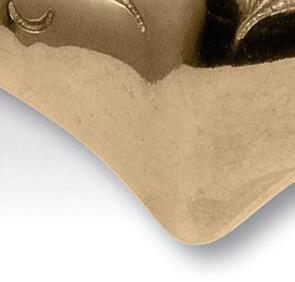



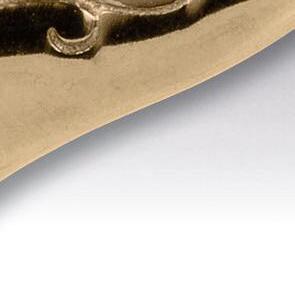

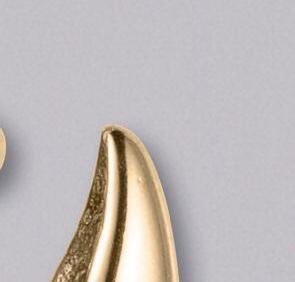


“No bird soars too high if he soars with his own wings”
- William Blake, English poet






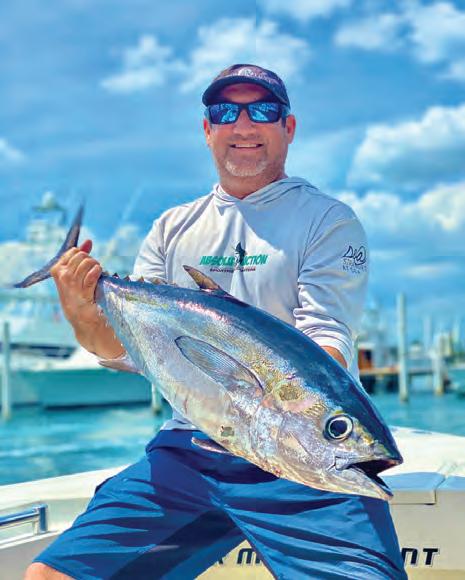







Whether you’re fishing from a paddleboard, kayak, canoe or small boat, the ePropulsion eLite 500W redefines your on-water experience with innovative features and commitment to sustainability. Designed to be the most compact and lightweight electric outboard in its class, the eLite is an easy-to-use alternative to small internal combustion engines for enthusiasts worldwide. Max 5.6 miles at half throttle and 3.5 miles at full throttle.
